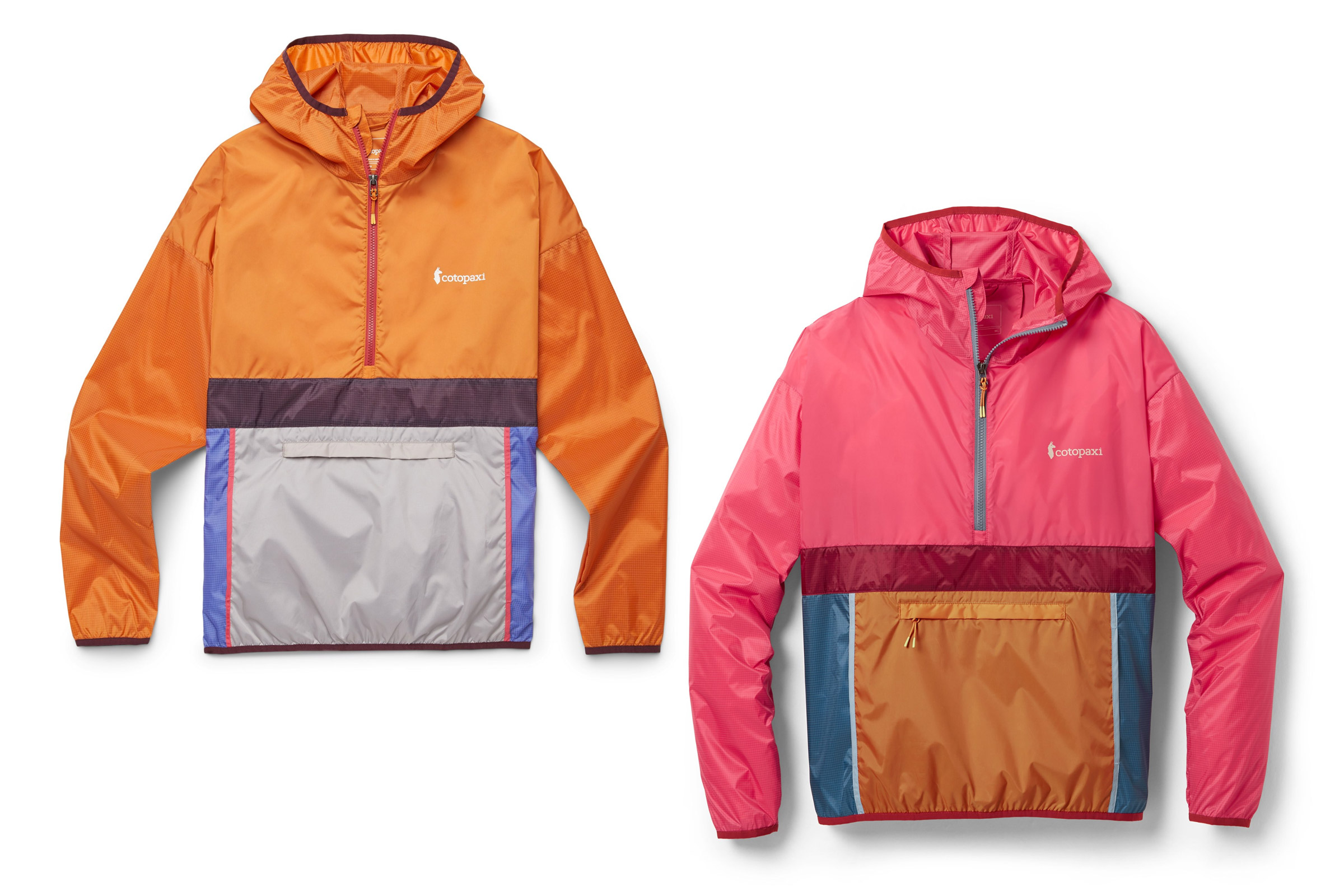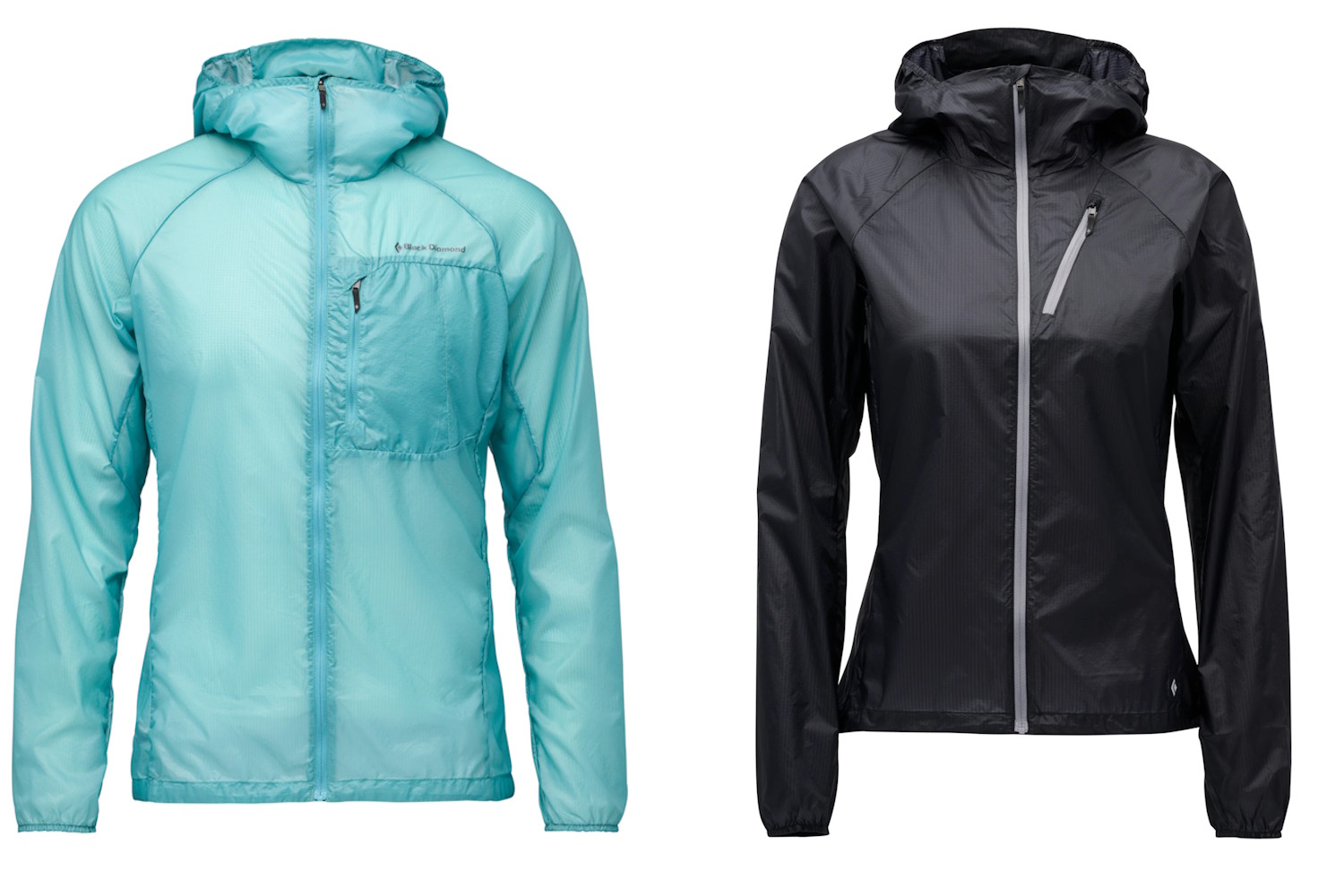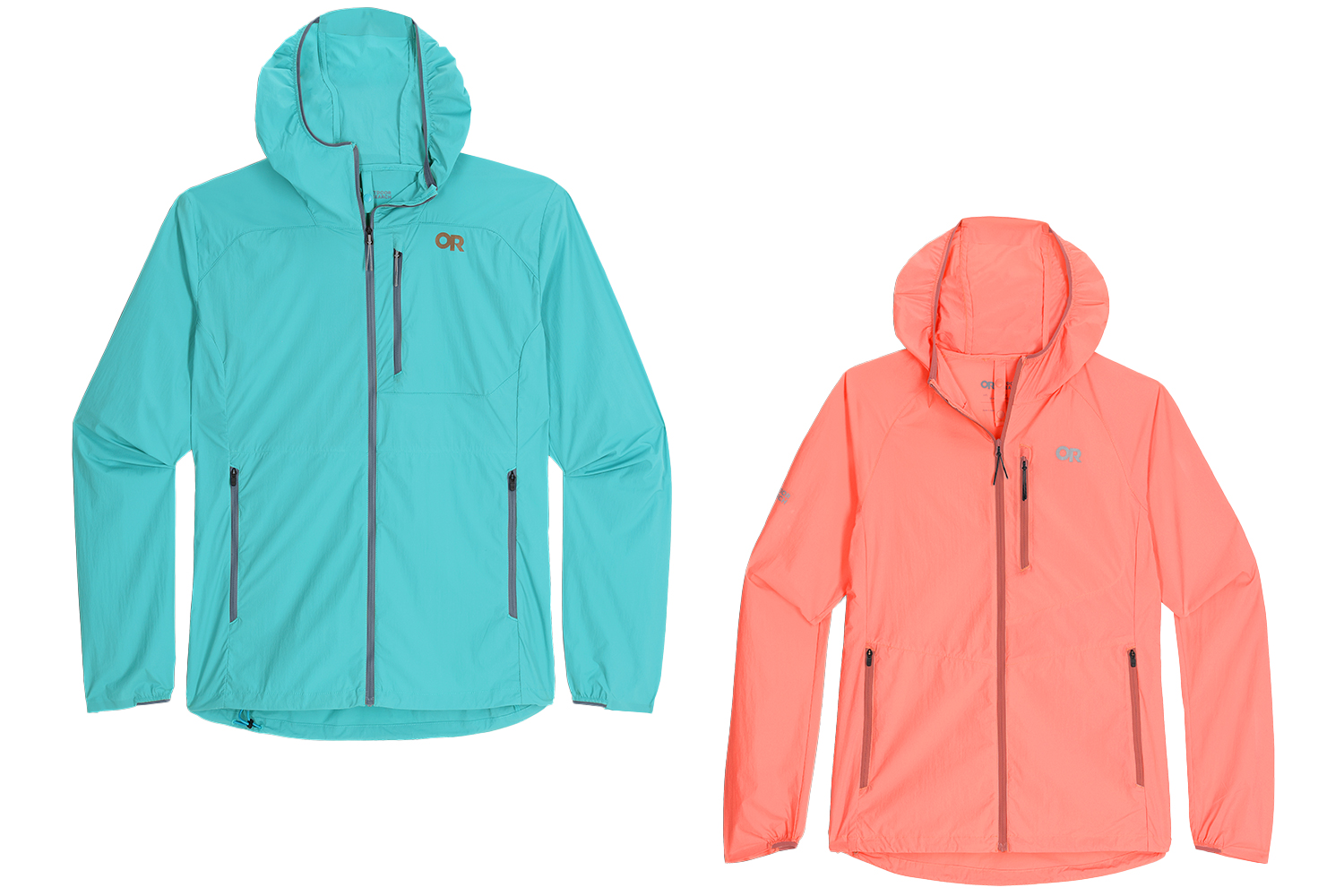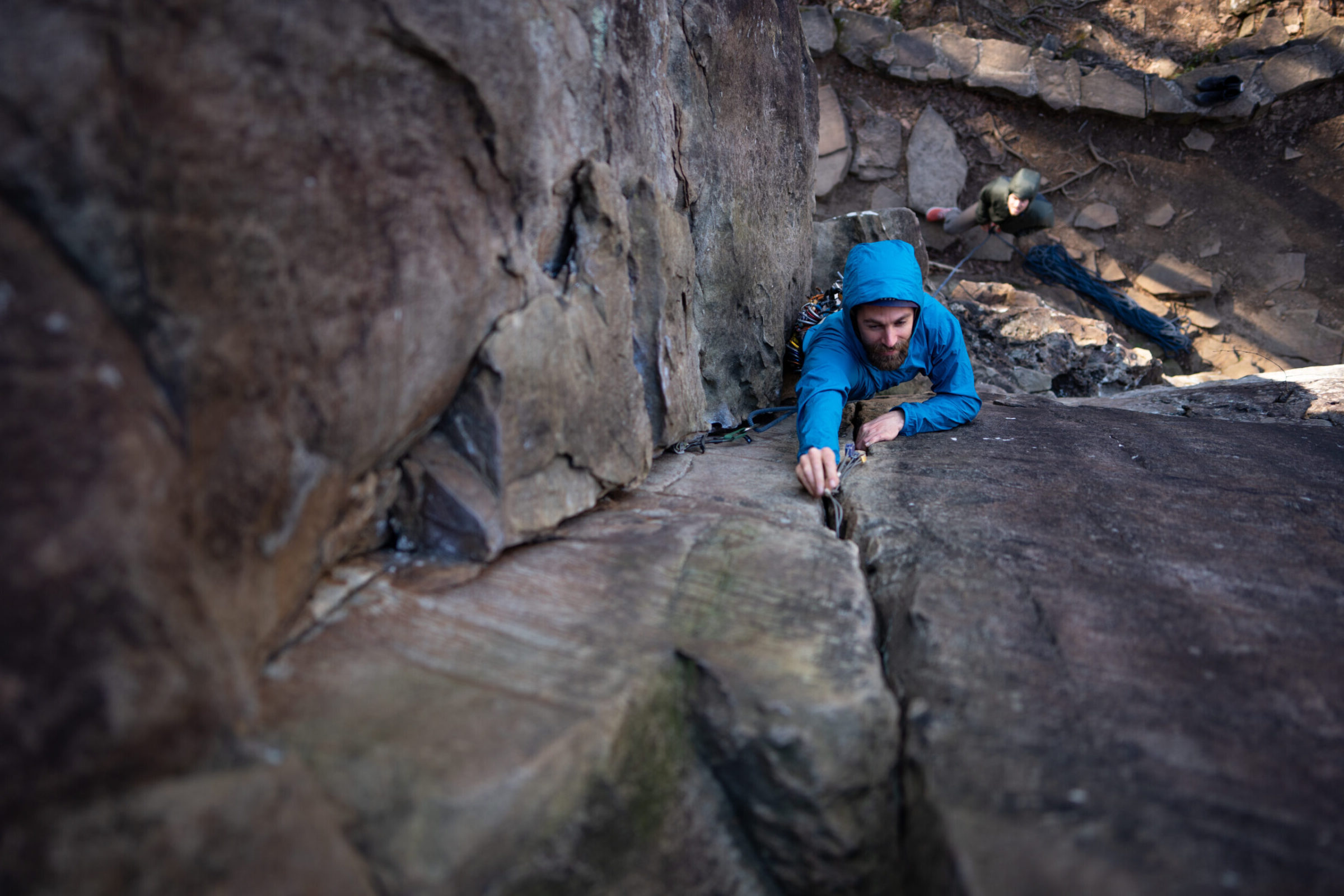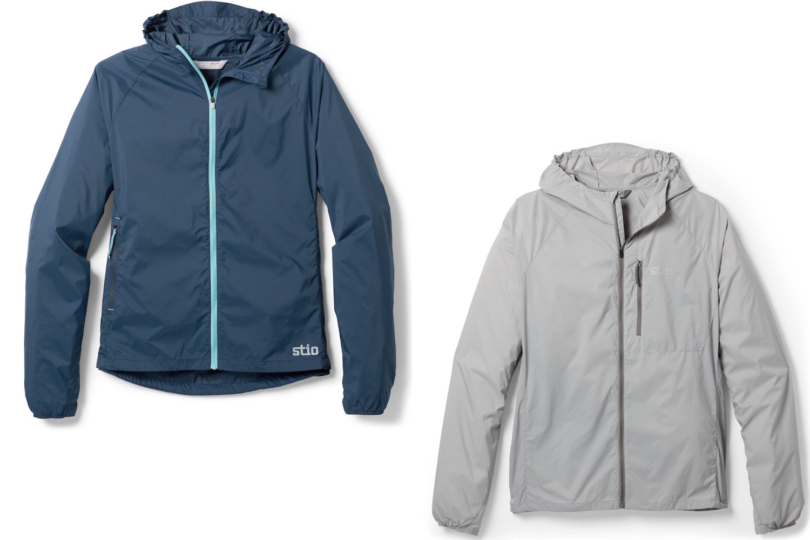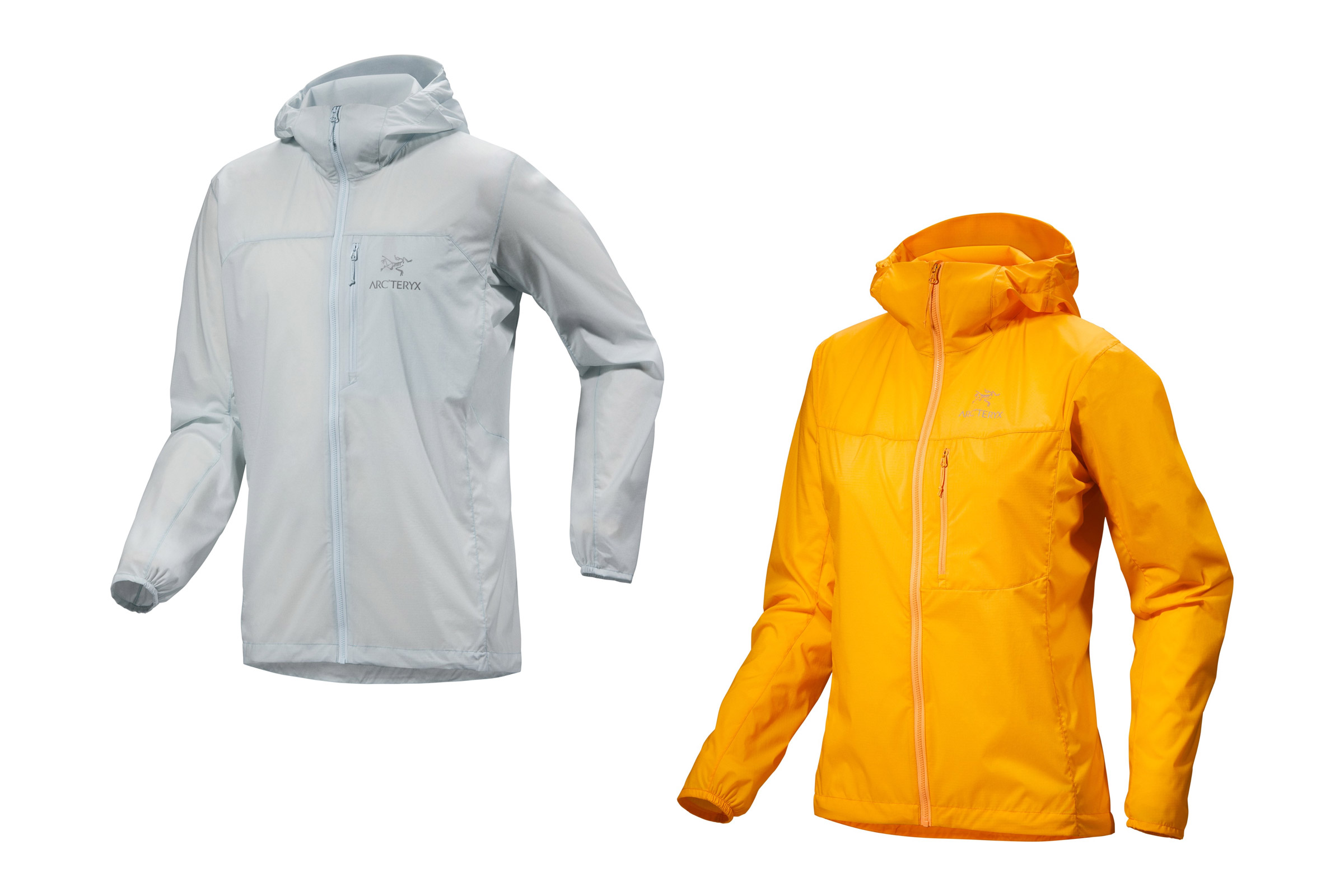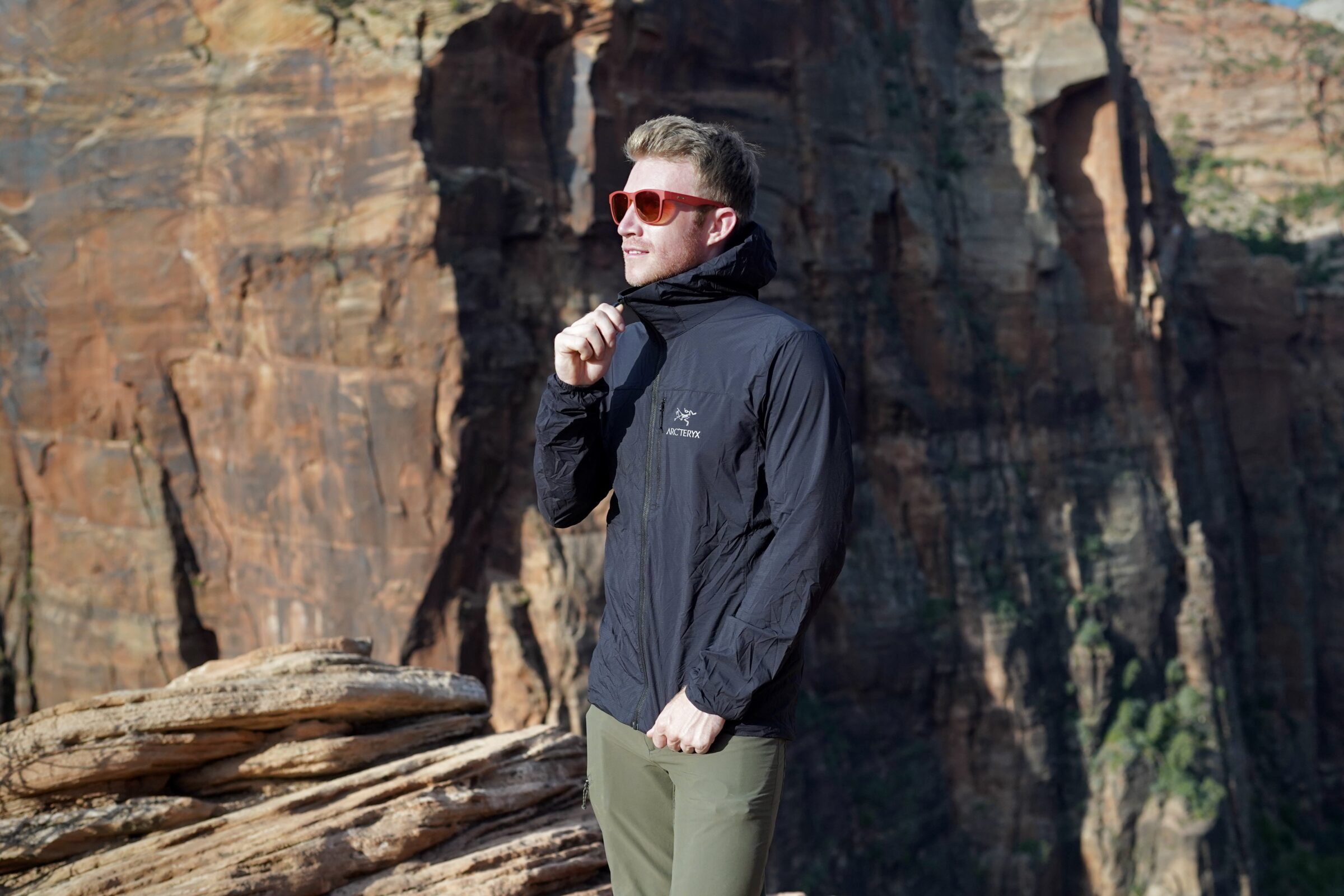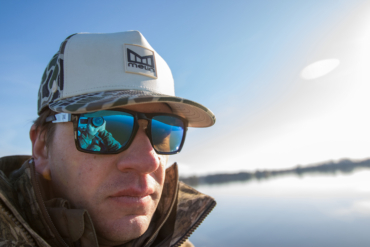When the wind howls across a ridgeline or whips down a canyon, a good windbreaker can be the difference between powering onward and turning back. Over the past three years, our team has put more than 25 jackets to the test — on big wall climbs in the Sierra, multi-day backpacks through the Tetons, thru hikes in the Appalachians, and even international expeditions — to find the true standouts.
Editor Chris Kassar and wildlife guide Ryan Kempfer pushed the latest models hard in 2024 and 2025, logging miles on skis, hikes, climbs, and bike rides in the Tetons and beyond. Longtime tester Chris Carter added his decade of experience, built on thousands of miles of thru-hikes and alpine missions, helping us pinpoint what really makes a windbreaker worth carrying.
From alpine essentials like the Patagonia Houdini to budget-friendly picks such as the Cotopaxi Teca Half-Zip, we’ve rounded up the jackets that deliver when the wind picks up, no matter where your next adventure takes you.
Editor’s Note: We updated this guide on October 28, 2025, by adding the Mountain Hardwear Kor Airshell Hybrid Hoody, a hybrid shell that blends wind protection with light insulation, and the Stio Second Light Windshell, an ultralight layer built for fast-and-light missions. We also introduced jacket ratings to give clearer insight into testing and rewrote the buyer’s guide to make it more helpful.
The Best Windbreaker Jackets of 2025
Patagonia Houdini
-
Breathability
8.2
-
Durability
8.8
-
Weather Resistance
9.4
-
Weight & Packability
9.0
- Weight: 3.7 oz. (men's medium)
- Materials: 100% recycled ripstop nylon with PFC-free DWR coating
- Pockets: 1 zippered chest pocket (stuff sack)
Pros
- Versatile protection for a range of different conditions
- Affordable but hard-working
- Ultralight and packable
- Stellar wind and weather resistance
Cons
- Not as breathable as other models
- Minimal elasticity
Cotopaxi Teca Half-Zip Windbreaker
-
Breathability
6.8
-
Durability
7.5
-
Weather Resistance
7.7
-
Weight & Packability
6.7
- Weight: 4.4 oz.
- Materials: 100% repurposed polyester taffeta & ripstop with DWR finish & PU backer
- Pockets: Kangaroo hand pocket, front zip pocket (stuff sack)
Pros
- Affordable
- Sustainable construction
- Solid weather-resistance
- Durable
Cons
- Not very breathable
- Not as packable as other models
- No cinch cords at hem or hood
Black Diamond Distance Wind Shell
-
Breathability
9.0
-
Durability
7.0
-
Weather Resistance
8.0
-
Weight & Packability
9.0
- Weight: 2.5 oz.
- Materials: 15D Light Weight Nylon Rip Stop Woven with GTT Empel PFC-Free DWR
- Pockets: Zippered chest pocket is stuff sack
Pros
- Absurdly light
- Surprising water resistance
- Breathable
- Very packable
- Large zippered pocket
Cons
- Not the most stylish
- Durability is uncertain
Outdoor Research Shadow Wind Hoodie
-
Breathability
8.0
-
Durability
8.5
-
Weather Resistance
8.4
-
Weight & Packability
8.9
- Weight: 5 oz.
- Materials: Bluesign-approved 90% nylon/10% spandex, 20-denier stretch woven
- Pockets: 1 zippered chest pocket (stuff sack), 2 zippered hand pockets
Pros
- Very light
- Stretchy, secure wrist cuffs
- Drawcord hem
- Bluesign-approved materials
Cons
- Trim fit not ideal for broader shoulders
- Hood stowage seems excessive
Black Diamond Alpine Start Hoody
-
Breathability
7.5
-
Durability
9.8
-
Weather Resistance
8.5
-
Weight & Packability
6.8
- Weight: 7.3 oz.
- Materials: 93% nylon, 7% elastane with Schoeller Eco-Repel Bio DWR finish
- Pockets: 1 zippered chest pocket (stuff sack)
Pros
- Stellar durability
- Great mobility for rock climbing or scrambling
- Comfy fabric
- Adjustable hood
Cons
- New iteration removes cinch cord at hem
- Heavy
Mountain Hardwear Kor Airshell Hybrid Hooded Jacket
-
Breathability
8.8
-
Durability
9.0
-
Weather Resistance
9.5
-
Weight & Packability
7.5
- Weight: 6.2 oz. (men's medium)
- Materials: 100% Nylon Pertex Quantum Air 20 D
- Pockets: 4 secure zippered pockets, (2 chest, 2 side (stuff sack))
Pros
- Blends wind protection with mapped insulation
- Breathable panels regulate heat during high-output activity
- Allows full mobility
- Packs small yet offers more warmth than standard windbreakers
- Extremely cool and useful features
Cons
- Heavier than ultralight options
Other Windbreakers That Blew Us Away
-
Breathability
7.9
-
Durability
7.0
-
Weather Resistance
8.0
-
Weight & Packability
8.5
- Weight: 4.4 oz. (men's medium)
- Materials: 100% recycled nylon with PFAS-free DWR finish
- Pockets: 1 zippered chest pocket (stuff sack)
Pros
- Extremely lightweight and compressible
- Breathable
- Streamlined fit with simple hem and cuff adjustments
- Easy to stash in a pocket or clip to a harness
Cons
- Limited durability for rough terrain
- Lacks extra warmth or features (like pockets)
-
Breathability
7.0
-
Durability
5.0
-
Weather Resistance
6.0
-
Weight & Packability
9.7
- Weight: 1.8 oz. (7D fabric, men's size medium)
- Materials: 7, 10, or 20D ultralight nylon with DWR finish
- Pockets: None
Pros
- Mega ultralight
- Solid feature set
- Super packable
- Highly wind-resistant
Cons
- No pockets or stuff sack
- Quick wet-out time
- Minimal durability
- Long lead times on custom orders
-
Breathability
6.0
-
Durability
7.5
-
Weather Resistance
5.5
-
Weight & Packability
7.7
- Weight: 4.6 oz.
- Materials: 20D Atmos woven nylon with PFC-free DWR coating
- Pockets: 2 zippered hand pockets (separate stuff sack)
Pros
- Affordable
- Durable
- Fully featured
- Wire-brimmed hood
- Solid wind resistance
Cons
- Comes with a separate stuff sack to keep track of
- Not the most breathable fabric
- Wets out fast
-
Breathability
8.3
-
Durability
7.1
-
Weather Resistance
7.6
-
Weight & Packability
8.0
- Weight: 3.7 oz.
- Materials: 1.2-oz 100% recycled nylon ripstop with DWR finish
- Pockets: Zippered chest pocket and two velcro hand pockets
Pros
- Ultralight, despite a robust feature set
- Solid ventilation
- Extremely packable
Cons
- No hood
- We wish the hand pockets were zippered
-
Breathability
8.5
-
Durability
7.8
-
Weather Resistance
6.0
-
Weight & Packability
8.0
- Weight: 4.5 oz.
- Materials: 20 and 50D flexible Aero60 nylon with PFC-free DWR treatment
- Pockets: 1 zippered chest pocket (stuff sack)
Pros
- Subtle, thoughtful features
- Durable but lightweight
- Wire-brimmed, packable hood
- Breathable but wind-resistant fabric
Cons
- No cinch cord at hem
- Wets out fast
- Expensive
-
Breathability
7.0
-
Durability
6.0
-
Weather Resistance
8.0
-
Weight & Packability
7.5
- Weight: 3.4 oz.
- Materials: Recycled polyamide & polyester with elastane & a PFC-free DWR coating
- Pockets: None (mesh pouch in collar is stuff sack)
Pros
- Ultralight and packable
- Fantastic breathability
- Above average wind and water-resistance
Cons
- No cinch cord at hem or hood
- No pockets
-
Breathability
7.5
-
Durability
7.0
-
Weather Resistance
7.5
-
Weight & Packability
7.8
- Weight: 4.9 oz.
- Materials: 100% Tyono nylon 30-denier shell with DWR coating
- Pockets: 1 zippered chest pocket (stuff sack)
Pros
- Stellar athletic fit
- Fabric has solid mobility
- Cinch cord at hem and back of hood
- Functional wire-brimmed hood
Cons
- On the heavy end of the spectrum
- Pricey
-
Breathability
6.5
-
Durability
8.0
-
Weather Resistance
7.6
-
Weight & Packability
6.0
- Weight: 12.2 oz.
- Materials: 54% recycled polyamide/46% organically grown cotton
- Pockets: 2 zippered hand pockets and 1 zippered chest pocket
Pros
- Warm
- Very wind resistant
- Zippered pockets
- Solid construction
Cons
- Pricey
- A bit stiff feeling for active use
- Heavy
Windbreaker Jackets Comparison Chart
| Windbreaker Jacket | Price | Weight | Materials | Pockets |
|---|---|---|---|---|
| Patagonia Houdini | $109 | 3.7 oz. | 100% recycled ripstop nylon with PFC-free DWR coating | 1 zippered chest pocket (stuff sack) |
| Cotopaxi Teca Half-Zip Windbreaker | $80 | 4.4 oz. | 100% repurposed polyester taffeta & ripstop with DWR finish & PU backer | Kangaroo hand pocket, front zip pocket (stuff sack) |
| Black Diamond Distance Wind Shell | $179 | 2.5 oz. | 15D Light Weight Nylon Rip Stop Woven with GTT Empel PFC-Free DWR | Zippered chest pocket is stuff sack |
| Outdoor Research Shadow Wind Hoodie | $129 | 5 oz. | Bluesign-approved 90% nylon/10% spandex, 20-denier stretch woven | 1 zippered chest pocket (stuff sack), 2 zippered hand pockets |
| Black Diamond Alpine Start Hoody | $199 | 7.3 oz. | 93% nylon, 7% elastane with Schoeller Eco-Repel Bio DWR finish | 1 zippered chest pocket (stuff sack) |
| Mountain Hardwear Kor Airshell Hybrid Hooded Jacket | $190 | 6.2 oz. (men’s medium) | 100% Nylon Pertex Quantum Air 20 D | 4 secure zippered pockets, (2 chest, 2 side (stuff sack)) |
| Stio Second Light Windshell | $119 | 4.4 oz. (men’s medium) | 100% recycled nylon with PFAS-free DWR finish | 1 zippered chest pocket (stuff sack) |
| Enlightened Equipment Copperfield Wind Shirt | $120 | 1.8 oz. | 7, 10, or 20D ultralight nylon with DWR finish | None |
| Rab Vital Hooded Jacket | $95 | 4.6 oz. | 20D Atmos woven nylon with PFC-free DWR coating | 2 zippered hand pockets (separate stuff sack) |
| Patagonia Houdini Stash ½-Zip Pullover | $139 | 3.7 oz. | 1.2-oz 100% recycled nylon ripstop with DWR finish | Zippered chest pocket and two velcro hand pockets |
| Nørrona Falketind Aero60 | $199 | 4.5 oz. | 20 and 50D flexible Aero60 nylon with PFC-free DWR treatment | 1 zippered chest pocket (stuff sack) |
| La Sportiva Blizzard Jacket | $119 | 3.4 oz. | Recycled polyamide & polyester with elastane & a PFC-free DWR coating | None (mesh pouch in collar is stuff sack) |
| Arc’teryx Squamish Hoody | $220 | 4.9 oz. | 100% Tyono nylon 30D shell with DWR coating | 1 zippered chest pocket (stuff sack) |
| Fjallraven High Coast Wind Jacket | $185 | 12.2 oz. | 54% recycled polyamide/46% organically grown cotton | 2 zippered hand pockets and 1 zippered chest pocket |
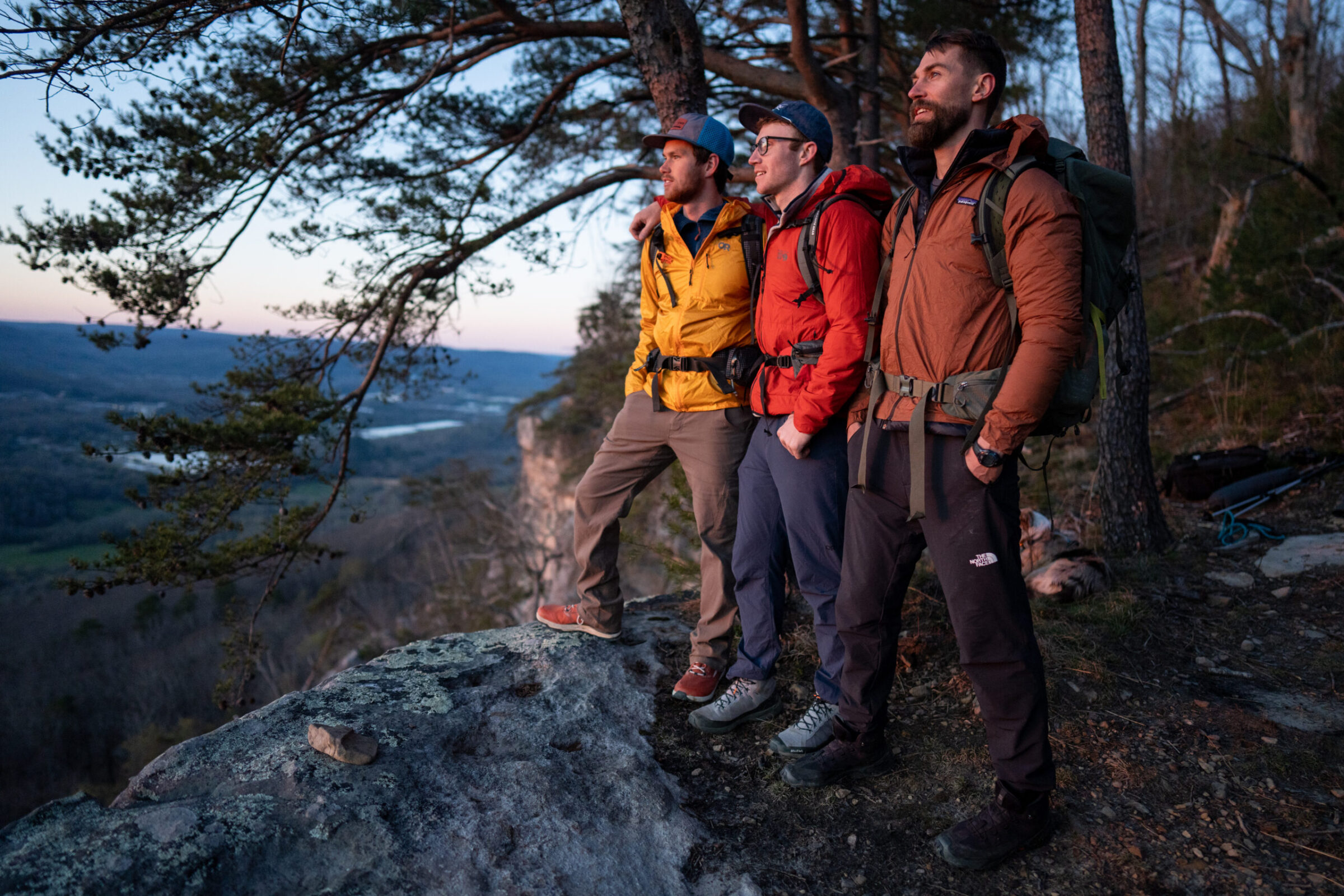
How We Tested Windbreaker Jackets
Our Expert Testers
Be it slow plods along breezy trails or full-on big wall assaults tethered to wind-battered cliffs — we take our windbreaker testing seriously. Senior Editor Chris Carter put over 25 windbreaker jackets through their paces over a seven-month testing period in demanding locations around the world — from remote tours in Africa to long rock climbs in Mexico. He winnowed the selection down to include nothing but the best for this roundup.
In addition, editor Chris Kassar and gear tester, Ryan Kempfer tested newer models on hikes, bike rides, backcountry ski tours and alpine adventures in the Tetons and Colorado Rockies. For a slew of different tasks, there’s a jacket here to answer the call.
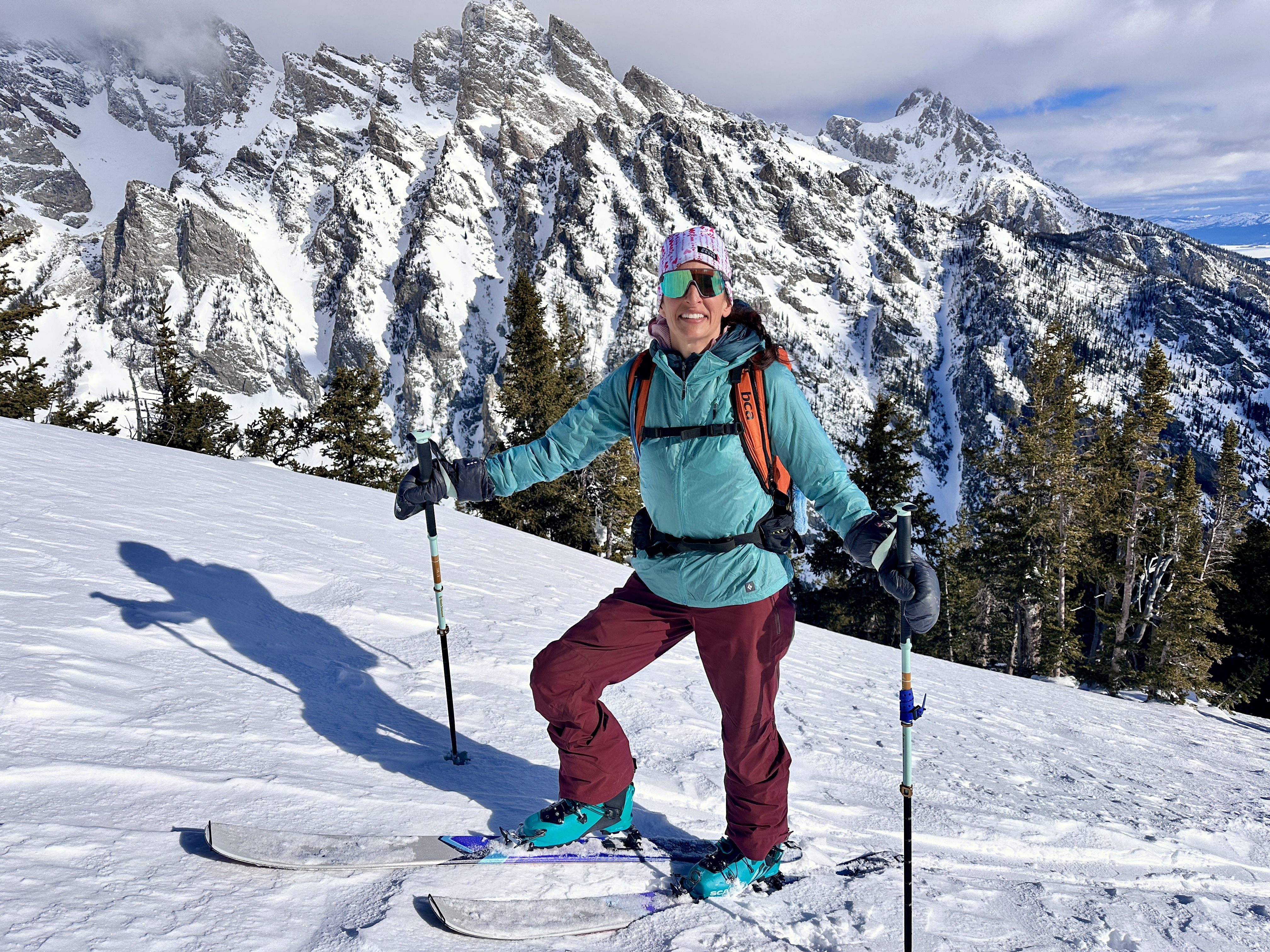
Testing Grounds & Processes
The models in this roundup were analyzed based on a handful of key factors: wind resistance, weather/rain resistance, breathability, value, and durability. Different windbreakers fit the bill for different outings, but each jacket had to stand out in one or more of these areas to merit any real estate in this article — or in our packs on an adventure.
Each model was taken on rigorous real-world tests according to their features and unique design (running-specific jackets were taken on trail runs, mountaineering-specific models on rock climbs, etc.). As a standardized test, we put each jacket through a shower-simulated downpour test to gauge the water resistance and/or DWR coating of each shell.
We wore a thin fleece jacket under each windbreaker in the shower and timed how long it took before the fabric completely wet out (soaked through the fabric entirely). Some wet out in seconds — others took nearly half an hour.
Finally, this is an evolving guide, and we add the newest jackets and revisit our old favorites each season. We work hard to stay on top of the newest and best windbreaker jackets on the market to bring you the most relevant suggestions possible.
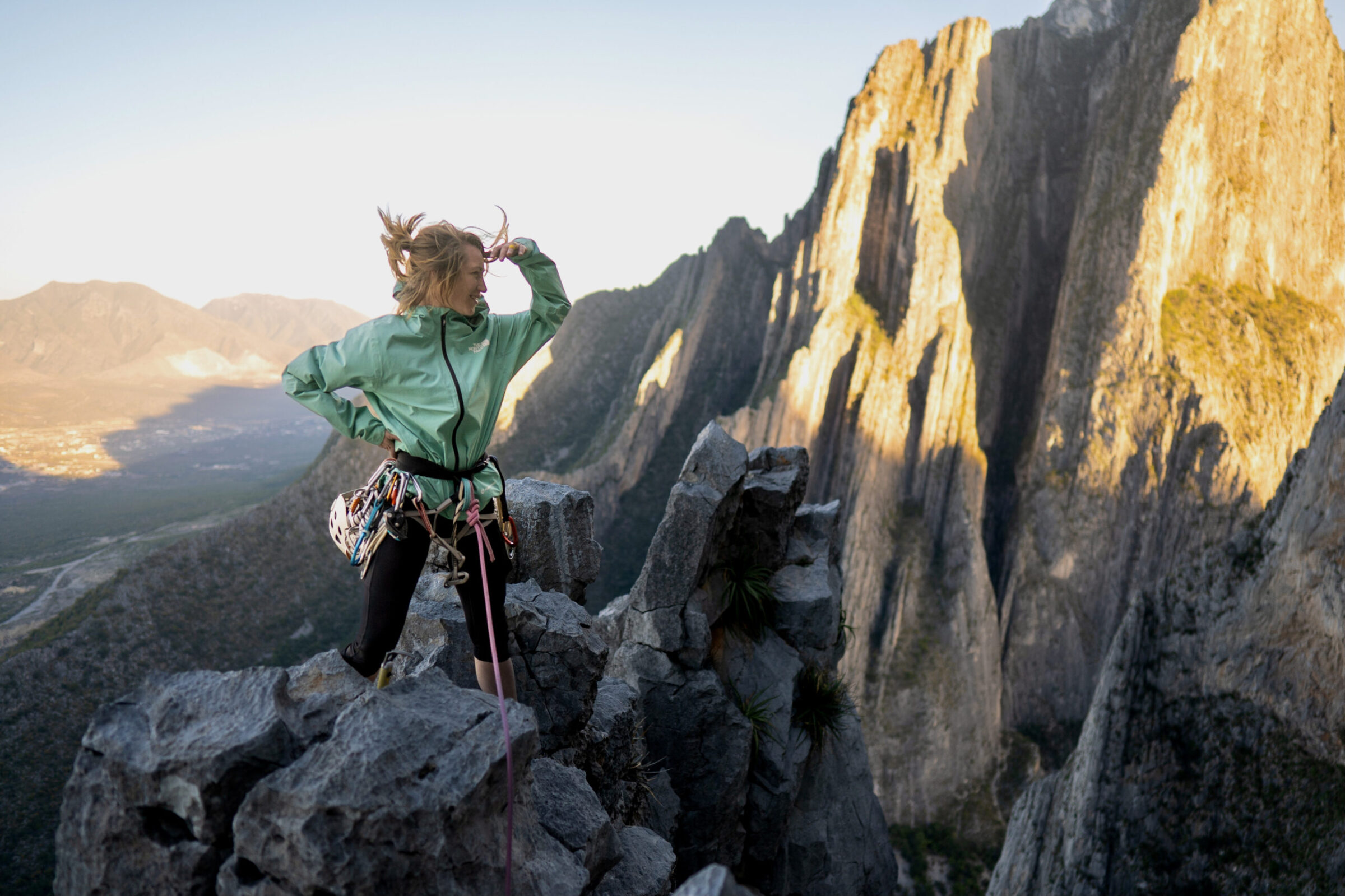
Our Windbreaker Rating System
We scored each windbreaker on breathability, durability, weather resistance, and weight & packability. Breathability looks at how well the jacket vents heat and moisture during runs, climbs, and fast-paced hikes. Durability measures how the fabric and construction hold up to abrasion, repeated use, and pack wear. Weather resistance reflects performance in wind, drizzle, and light snow without sacrificing comfort. Weight & packability considers how light the jacket feels on the move and how small it packs down for stashing in a pocket or pack.
The overall score is not a straight average of these numbers. Instead, it reflects our editorial judgment of the full experience in the field. A jacket with lower durability may still rank high overall if it’s exceptionally breathable and packable, while a budget pick might score well on durability but lower overall if performance lags.

Buyer’s Guide: How to Choose the Best Windbreaker Jacket
Why Do You Need a Windbreaker?
It’s easy to question a $150 layer that feels like tissue paper. But spend enough time outside, and that featherweight jacket might become the most-used piece of the kit.
Before taking the famed Patagonia Houdini on a thru-hike of the Pacific Crest Trail in 2018, skepticism was high for tester Chris Carter. It offered little rain protection, took up pack space, and seemed overpriced. Yet after windswept ridges, icy knife edges, and cold dawn starts, that “flimsy” jacket quickly became indispensable.

The appeal of a windbreaker lies in lightweight, packable versatility. It works as a standalone in mild conditions, layers easily over insulation in strong gusts, and compresses down to nothing when not in use. It won’t replace hard shells and rain jackets or provide the insulating power of fleece or down jackets, but it fills a critical gap.
Wind chill accelerates heat loss, making temperatures feel much colder than the air suggests. A thin, tightly woven fabric blocks that airflow, helping regulate body heat without sacrificing breathability or mobility.
From granite cracks to alpine ridges, windbreakers disappear in a pack until needed — and when the wind picks up, nothing else works quite as well.
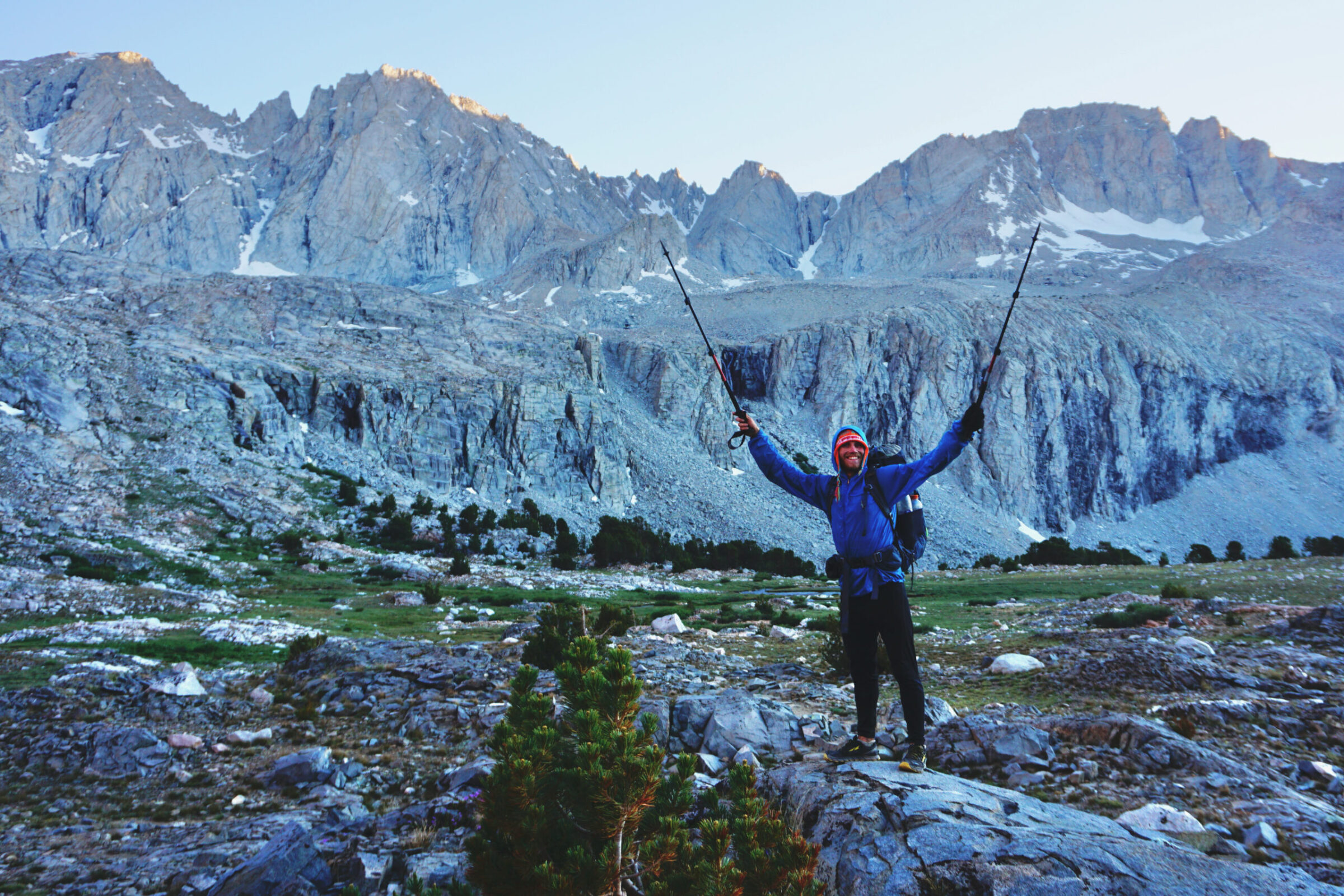
Weight
Let’s get down to brass tacks — windbreakers weigh almost nothing. Most come in under 5 ounces, with ultralight options like the Black Diamond Distance Wind Shell, or EE’s Copperfield Wind Shirt dipping as low as 1.6 ounces — about the same as a fancy fountain pen.
For ounce-counters, that weight-to-performance ratio is hard to beat. They provide wind and weather protection far beyond what their size suggests, often allowing cuts in other areas of a kit. From sub-2-ounce shells for fast pushes to more durable options like the Black Diamond Alpine Start Hoody for extended expeditions, there’s a windbreaker tailored to just about any mission.
The bottom line: to earn a place in a fast-and-light kit, a shell needs to be light, packable, and protective — and today’s designs deliver.
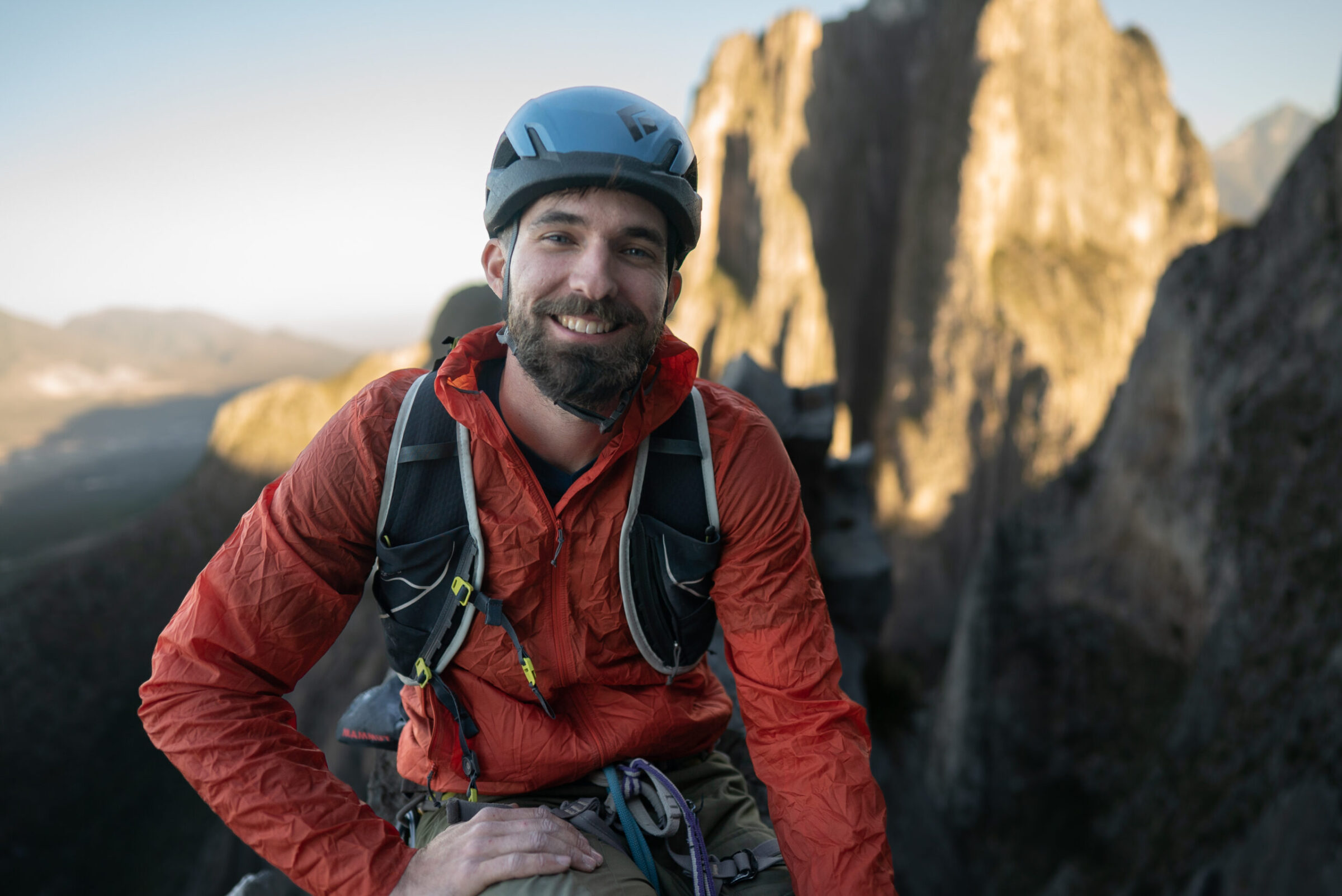
Packed Size
Packed size is where windbreakers truly shine. The best models deploy in seconds from a tiny pocket and stow just as easily when the sun comes back out. Many use an integrated stuff sack — usually a zippered hand or chest pocket with a double-sided zipper — while others, like Rab’s Vital Hooded Jacket, include a separate pouch. We prefer the integrated design, especially when paired with a carabiner loop for clipping to a pack or harness.
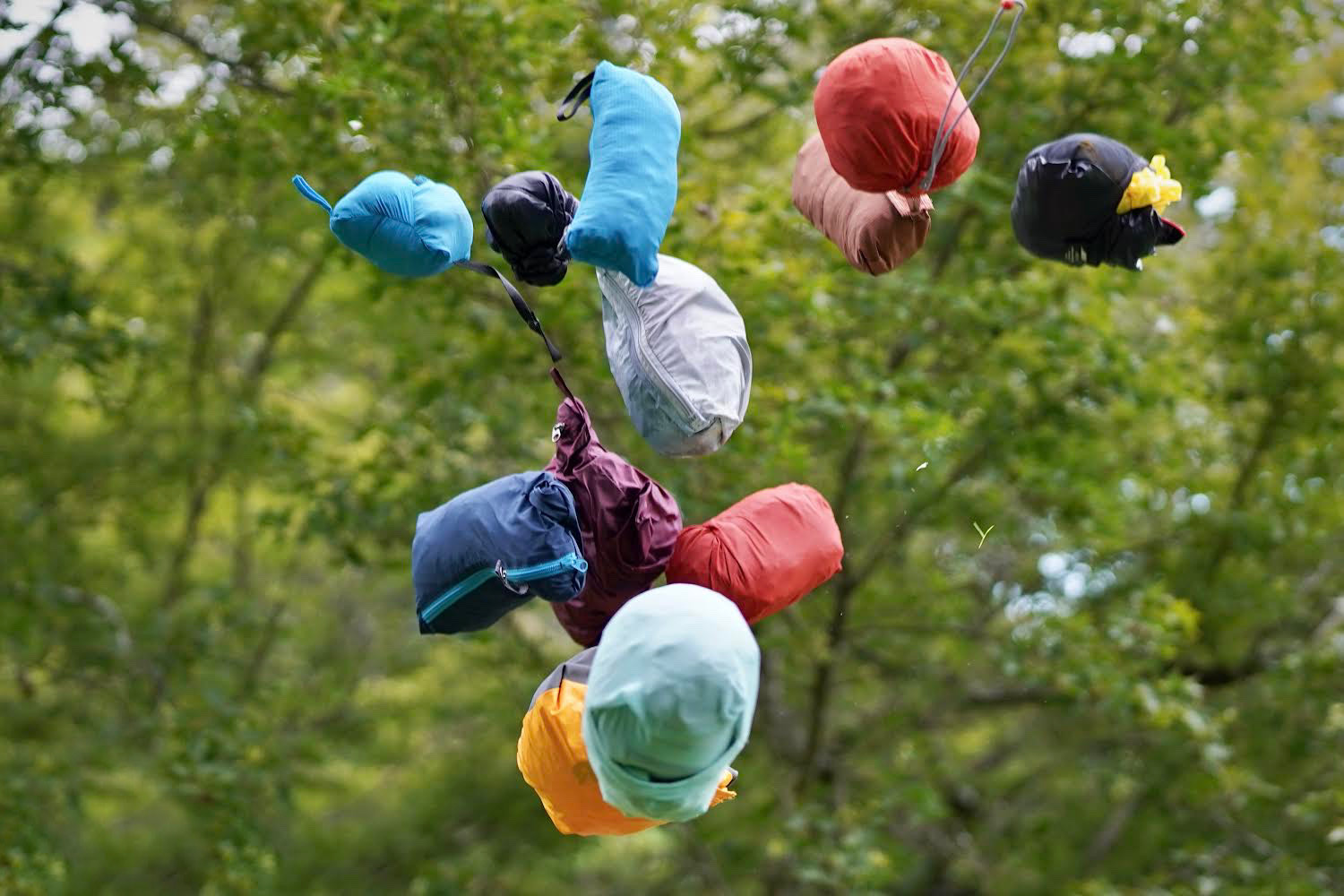
Most windbreakers compress to the size of a grapefruit or smaller, making it easy to justify tossing one in a pocket. The catch? Some brands shrink the stuff sack so much that cramming the jacket inside feels like a workout. Jackets like the Teca Half-Zip or Outdoor Research’s Shadow Wind Hoodie strike a better balance, offering generous stuff pockets that actually make stowing quick and painless.

In general, the more compact the jacket, the lighter and thinner the fabric, and often the less durable. Ultralight shells like the Black Diamond’s Distance Wind Shell are a dream for runners, but for alpine missions where abrasion is inevitable, a burlier option like the Black Diamond Alpine Start Hoody is worth the extra bulk.
Wind Resistance and Breathability
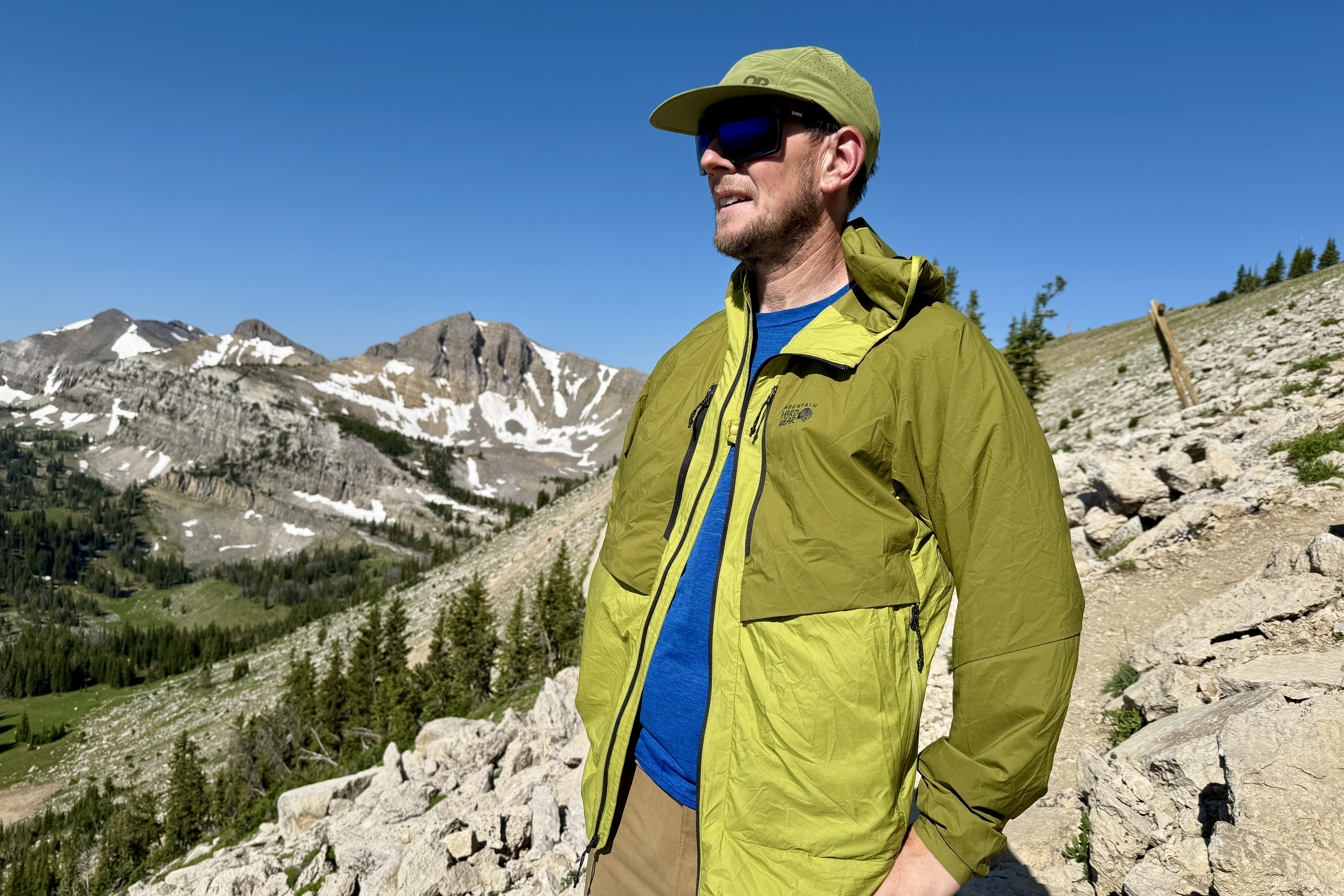
Whoever named “walkie-talkies” may have also coined “windbreakers.” Simple, straightforward, and accurate. If these jackets excel at one thing, it is cutting the wind.
That job is harder than it sounds. A good windbreaker must reduce convective heat loss while still allowing breathability, mobility, and packability. The balance depends on use: alpine and hiking models usually block more wind, while running-focused shells lean toward greater airflow and ventilation.
This tradeoff is measured in CFM, or “cubic feet per minute,” which shows how much air passes through a square foot of fabric at 30 mph. Lower CFM means higher wind resistance. For reference, fleeces sit around 60 CFM, softshells 5 to 10 CFM, and hardshells close to 1 CFM. A true 0 CFM windbreaker would keep all air out, but feel like wearing a trash bag if you are moving fast. Most jackets aim for a middle ground that protects from gusts while still breathing during exertion.
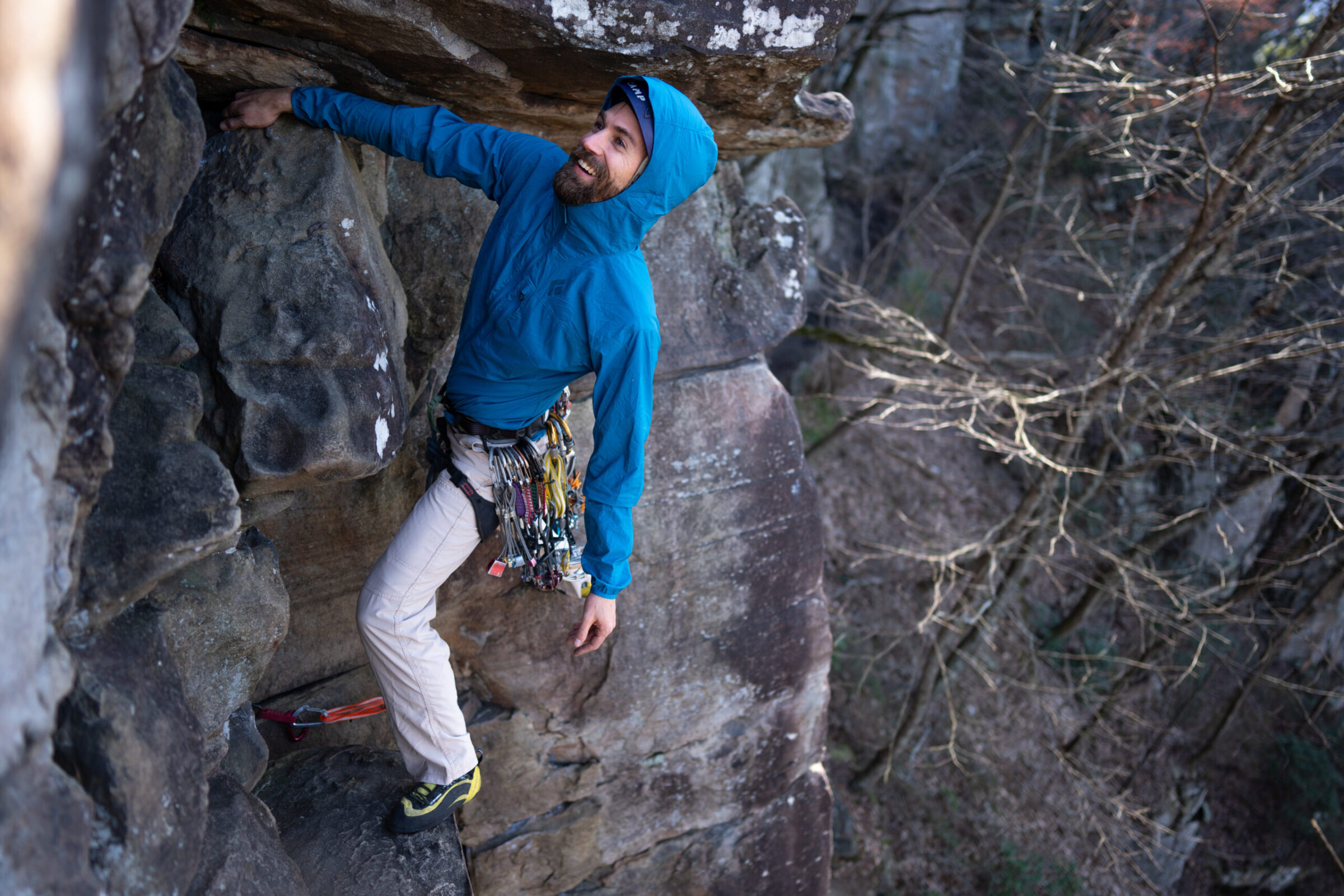
Other features also influence performance. Mesh panels, stretch fabrics, or vents boost airflow, especially in running-specific models like the La Sportiva Blizzard. More protective shells like the Patagonia Houdini sacrifice some breathability for defense in strong winds, while pieces such as the Mountain Hardwear Kor Airshell Hybrid balance airflow and protection for fast, technical missions.
The key is to match your jacket to your activity and environment. Ultralight breathable models shine on hot, high-output days, while sturdier options earn their place in cold, gusty alpine terrain.
Weather and Water Protection
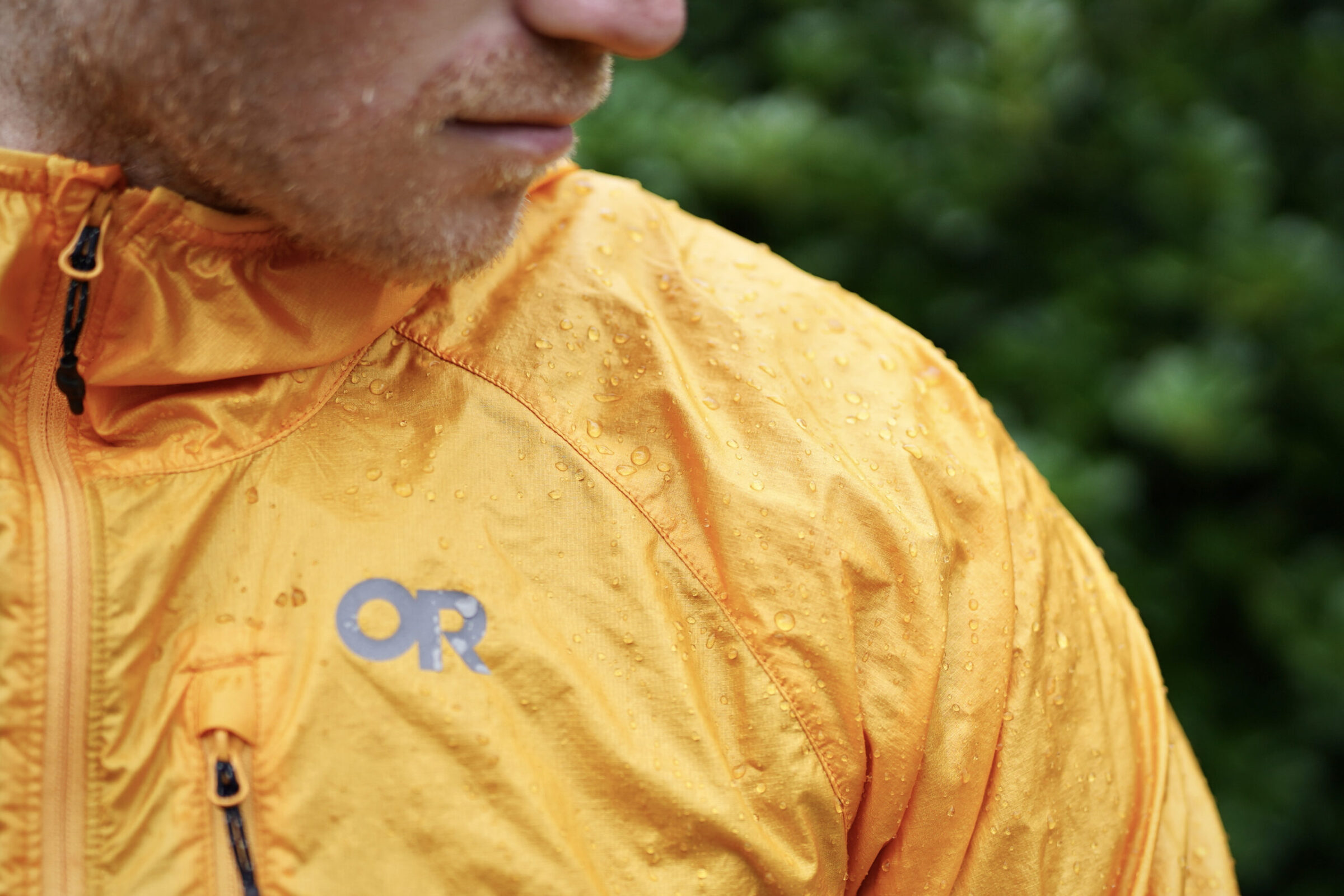
Ultralight minimalism, breathability, and packability always come at a cost, and for windbreakers, that cost is weather and water protection. They are not designed to replace hardshells and rain jackets and will fall short in prolonged storms or variable multi-day conditions.
That said, many models hold their own in light precipitation. Most feature a thin DWR (Durable Water Repellent) coating that beads up small amounts of rain, though this finish wears off over time. A wash or retreatment with products like Nikwax’s TX.Direct can help restore performance. Look for PFC-free DWR whenever possible to avoid harmful perfluorinated chemicals.
Some jackets outperform expectations. The Black Diamond Distance Wind Shell, Outdoor Research’s Shadow Wind Hoodie, and Patagonia’s Houdini have all delayed wet-out during surprise showers on climbs and hikes. While none are a substitute for a full waterproof shell, they offer more protection than their paper-thin feel suggests.

Waterproofness Explained
No matter how strong the DWR coating, a windbreaker will never match the waterproof protection of a rain jacket. When sustained downpours hit, the heavier cousins always come out.
Waterproofness is measured by Hydrostatic Head (HH), which tests how many millimeters of water a fabric can withstand before leaking. To qualify as “waterproof” under the British Standard, a jacket must reach at least 1,500 mm. Technical rain jackets usually range from 5,000 to 10,000 mm, while top-tier hardshells push as high as 30,000 mm. Windbreakers fall well below that threshold.
Still, they are far from useless. For their weight and packability, windbreakers offer meaningful resistance to wind, fend off light moisture, and often prove more durable than they look. They are not built for monsoons, but they punch above their weight when conditions turn harsh on windy ridges or exposed alpine terrain.
Durability In The Real World
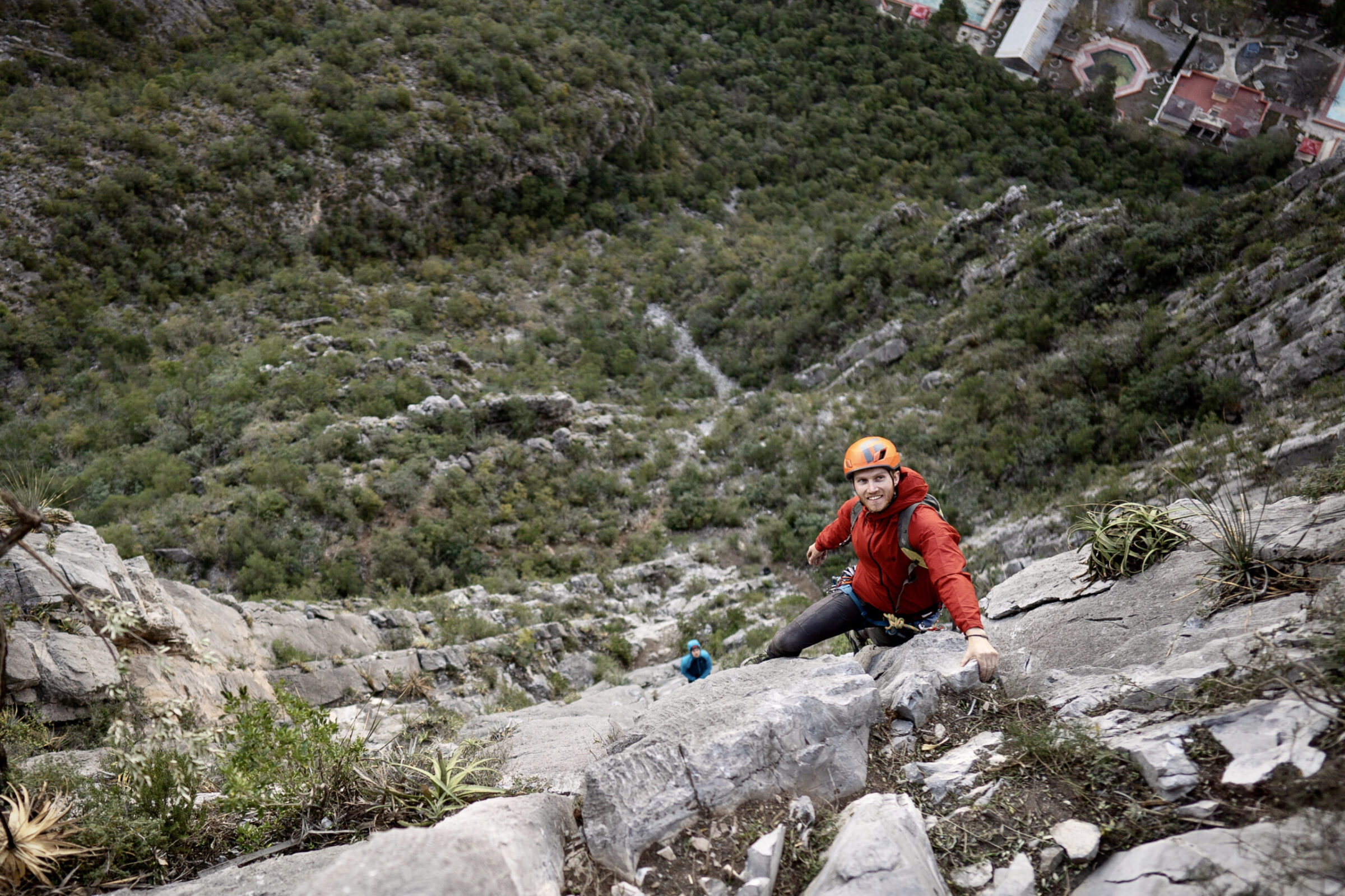
No need to sugarcoat it: windbreakers can shred easily. A few rounds of bushwhacking and you may have more ventilation than you bargained for. Still, for a weather-resistant shell that folds into your pocket, they punch well above their weight. Treat them with a bit more care than a rain jacket, and they can last through years of ultralight use.
If your trip involves off-trail travel or sharp granite scrambles, a burlier shell is a better choice. Yet models like Patagonia’s Houdini and Copperfield Wind Shirt have proven surprisingly resilient on thru-hikes and international climbing trips. Light brush is manageable, but jagged chimneys and brambles will take their toll.
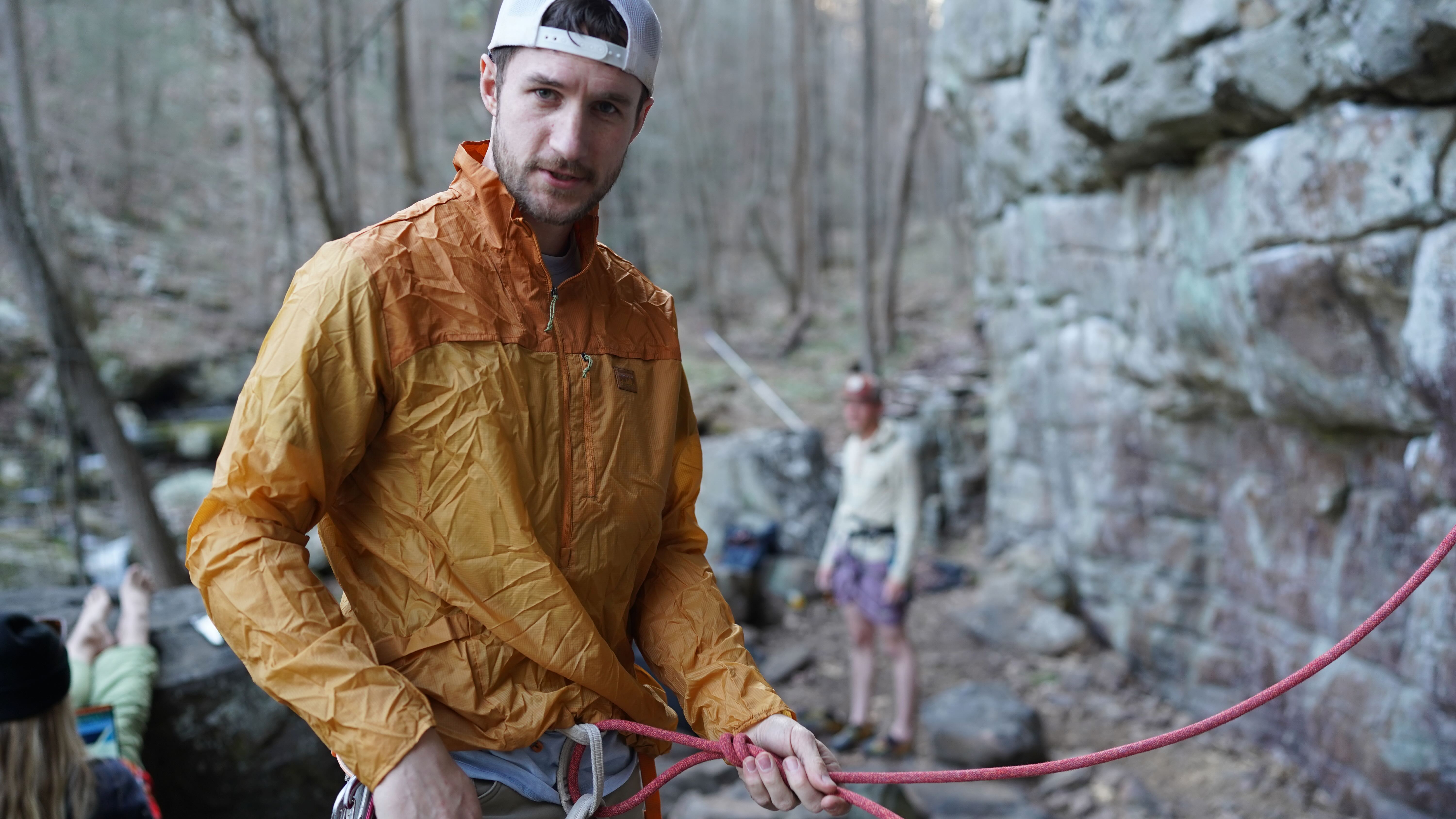
What Makes Windbreakers Last
The secret to longevity in sub-5-ounce jackets lies in the fabrics. Most combine nylon, polyester, or elastane with reinforcements such as ripstop grids, stretch-woven panels, and DWR coatings. Higher denier or fabric weight (oz/yd² or gsm) improves durability but sacrifices packability.
Ripstop fabric strengthens light materials by using a grid of thicker threads to prevent small tears from spreading. Stretch-woven blends, like Fjällräven’s HC-Core, flex under pressure rather than puncture, while coatings repel debris and moisture. Together, these features make ultralight shells like the Black Diamond Distance Wind Shell more capable than their weight suggests.
For expeditions in punishing terrain, windbreakers work best as part of a layering system. They can handle moderate abuse but are not substitutes for hard shells when rain or rockfall becomes serious.
Minimalist Design
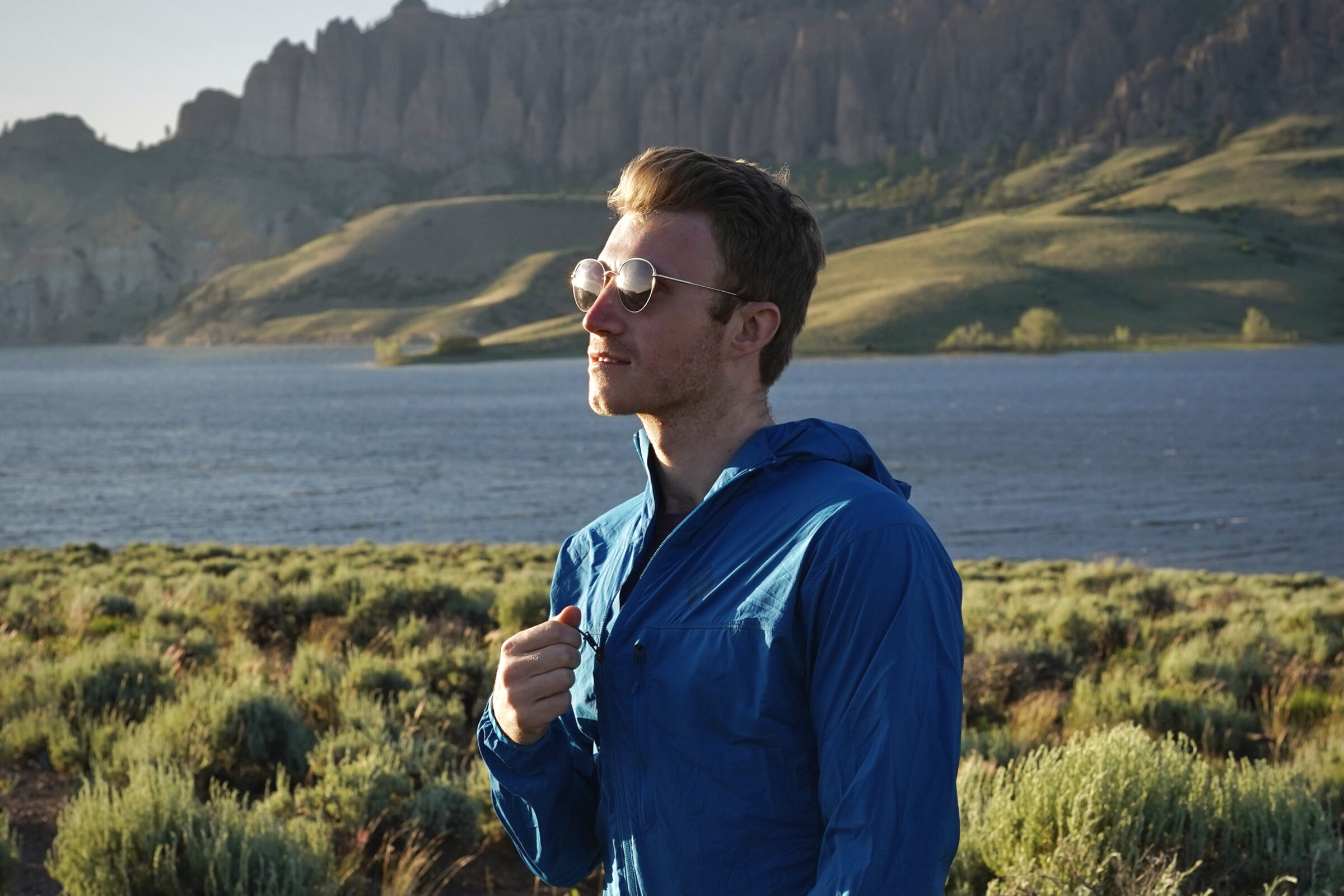
Windbreakers are built on the principle of minimalism. To stay true to their lightweight, packable roots, designers trim away anything unnecessary, leaving only the essentials. That said, small design tweaks can make a big difference in function, separating streamlined running layers from more versatile hiking and climbing shells.
Key Features
Most windbreakers include at least one zippered chest pocket, sometimes two handwarmer pockets, with one often doubling as a stuff sack. Hoods are common, with technical models such as the BD Alpine Start Hoody using simple back cinches, while jackets like Rab’s Vital Jacket. add Velcro adjustments for a more secure fit.
Hem cinches and elastic cuffs help seal in warmth, and lightweight full-length zippers are standard, though fragile, so they require careful handling. Some ultralight models skip the full zipper entirely in favor of a pullover design with a short half- or three-quarter zip to shave grams.
Feature sets often reflect intended use. Hiking-oriented jackets may provide more pockets and adjustability, while running models prioritize breathability and stripped-down designs for speed.
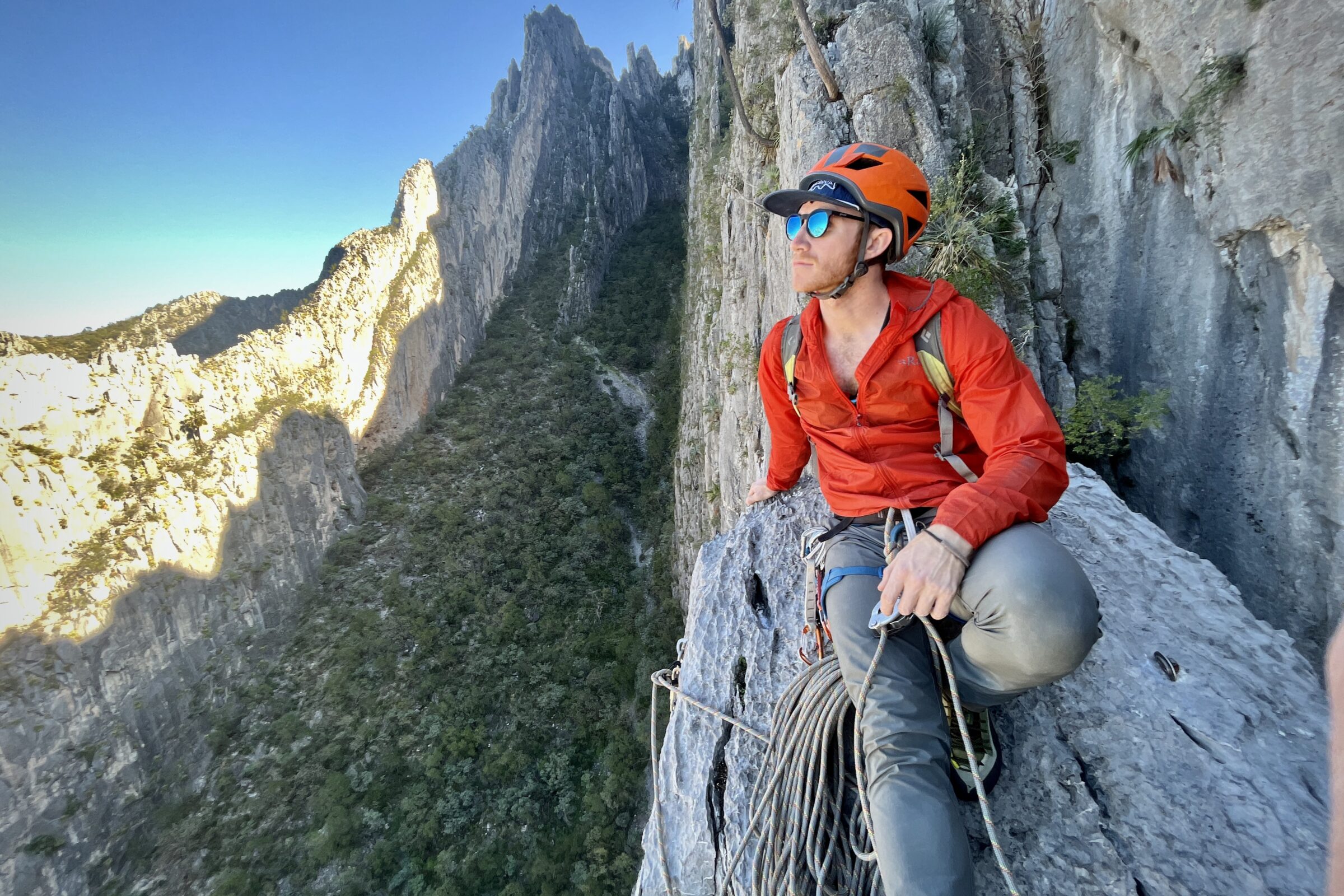
Cinches at the hem are also common, which play a substantial role in sealing in warmth and thwarting the wind, and elasticated cuffs serve the same purpose. Most windbreaker jackets have a lightweight, full-length zipper, which we have found to be a potential weakness of these thin shells — so close with care.
Some feature a pullover design with a tiny, ½- or ¾-length front zipper to truly cut weight. For the ultralight backpacking or running crowd, these check all the boxes of a minimalist setup.
The type of adventure you plan to bring your jacket on will help to dictate the feature set you need. Windbreakers for hiking will generally offer more pockets and adjustability, while a streamlined running jacket may prioritize lightweight ventilation over function.
Categories of Windbreaker Jackets
As we have discussed above, windbreakers vary greatly in the degree of weather protection, durability, breathability, and feature sets they offer. They all serve the core purpose of preventing thermal energy loss by keeping the wind off your skin but are designed to carry out this role to different capacities depending on your preferred activity.
Running Windbreakers
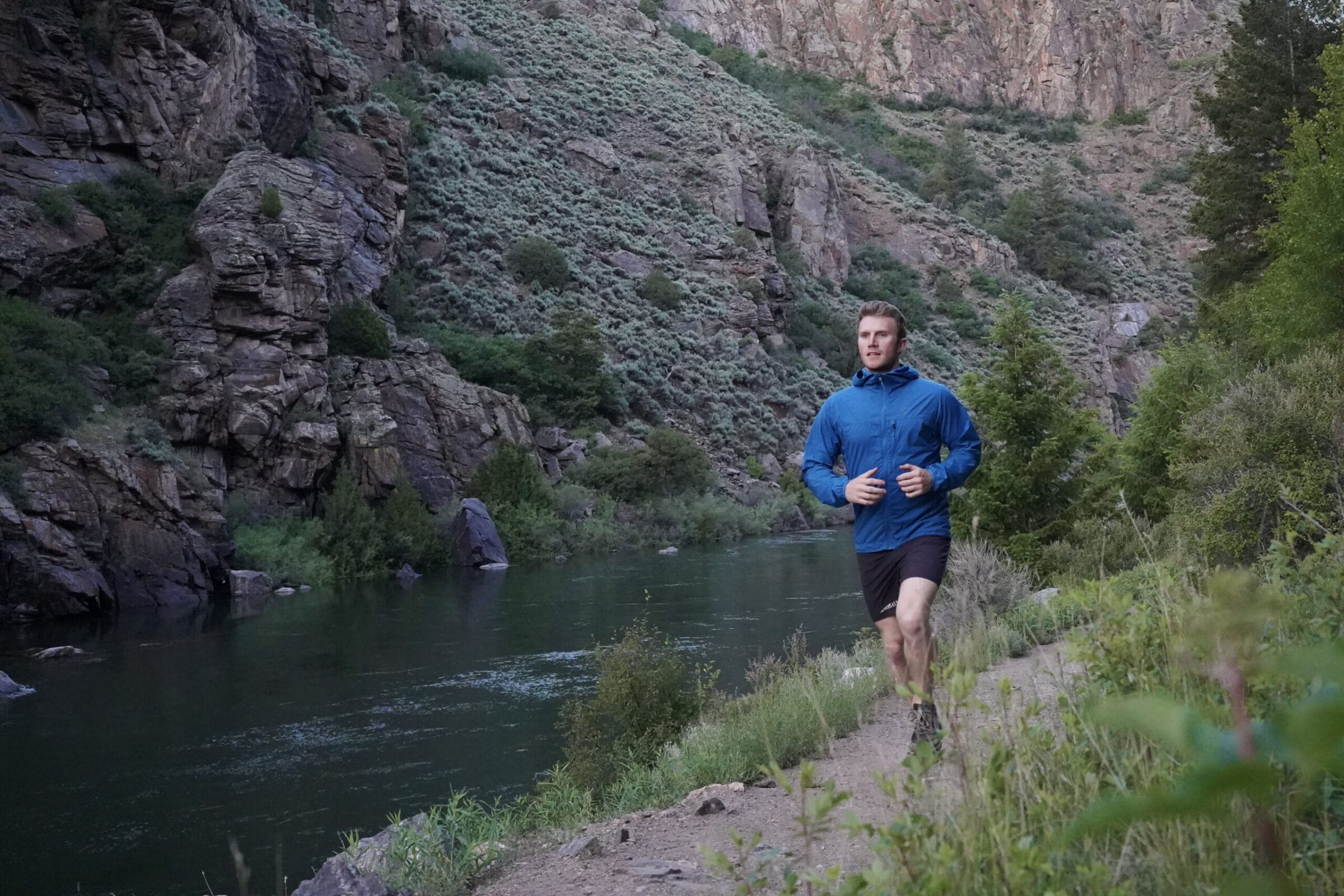
These are the gram-weenie ounce counters of the windbreaker family. Every speck of weight has the potential to hold you back while pounding the pavement on casual jaunts or eating up vert on the Leadville 100, so a dialed kit is paramount for performance.
Windbreakers designed for running axe any superfluous features, pack down small for storage in pockets of running shorts or hydration packs, and maximize breathability so you won’t overheat. They sport extremely thin fabrics for ventilation, and often include mesh panels or open vents for increased airflow. They also tend to have more tapered, form-fitting designs for unencumbered comfort while hitting your tempo.
Some of our favorite windbreakers for serious trail or road running include La Sportiva’s Blizzard, the Enlightened Equipment Copperfield Wind Shirt, and the Black Diamond Distance Wind Shell. All of these will waft away in a light breeze at under 4 ounces, with the Copperfield taking the cake at a ridiculous 1.8 ounces.
These are key for keeping wind off your skin while regulating moisture buildup on exposed ridgelines or blustery winter mornings. However, if you wander off trail, they won’t last long. Their thin design is perfect for lightweight breathability, but they cower in the face of more brutal adventures.
Mountaineering/Climbing Windbreakers
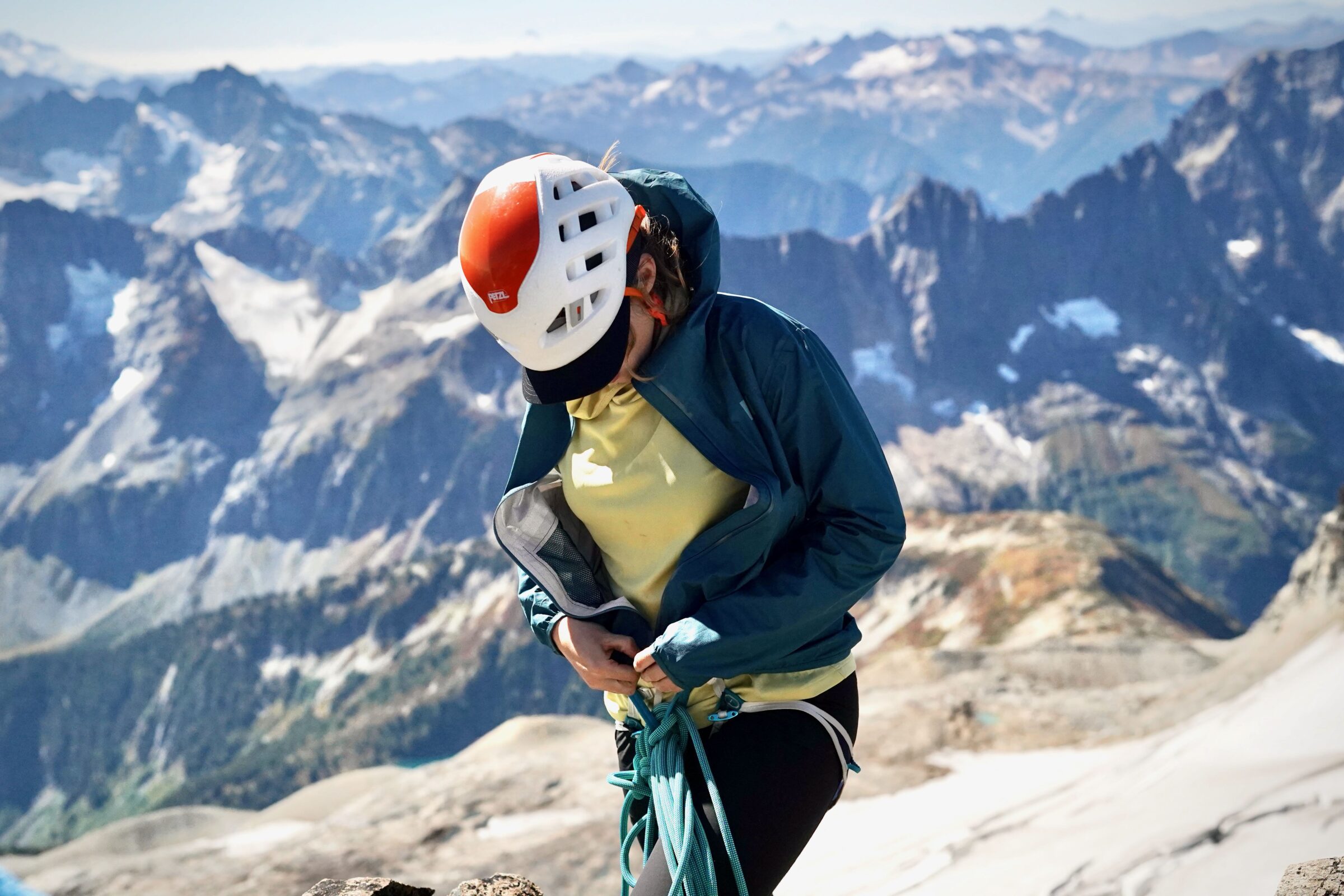
Jam up granite splitters, battle through ridgeline gusts, or break trail on remote alpine snowfields — these are the shells for the job. If we call any windbreaker a workhorse, these would fit.
With impressively low weights, jackets like Black Diamond’s Alpine Start and Arc’teryx’s Squamish Hoody shrug off significant abuse and provide breathable protection while charging hard in far-flung ranges.
Expect to find a handful of helpful extras on these bad boys, including helmet-compatible hoods (often with wire reinforcements), stretch-woven rip-stop materials, water-resistant coatings, and adjustable hems. They will also often feature sleek stuff sacks with carabiner clips for securing to a harness.
The thicker durable material used in these does nudge them toward the heavier, more bulky fringe of the spectrum, with several models inching as high as — gasp — a dreaded 7 ounces. While it may not seem like much, there’s no shortage of die-hard ultralighters who will turn their nose up at the addition of a few mere grams.
Fully-Featured Hiking Windbreakers
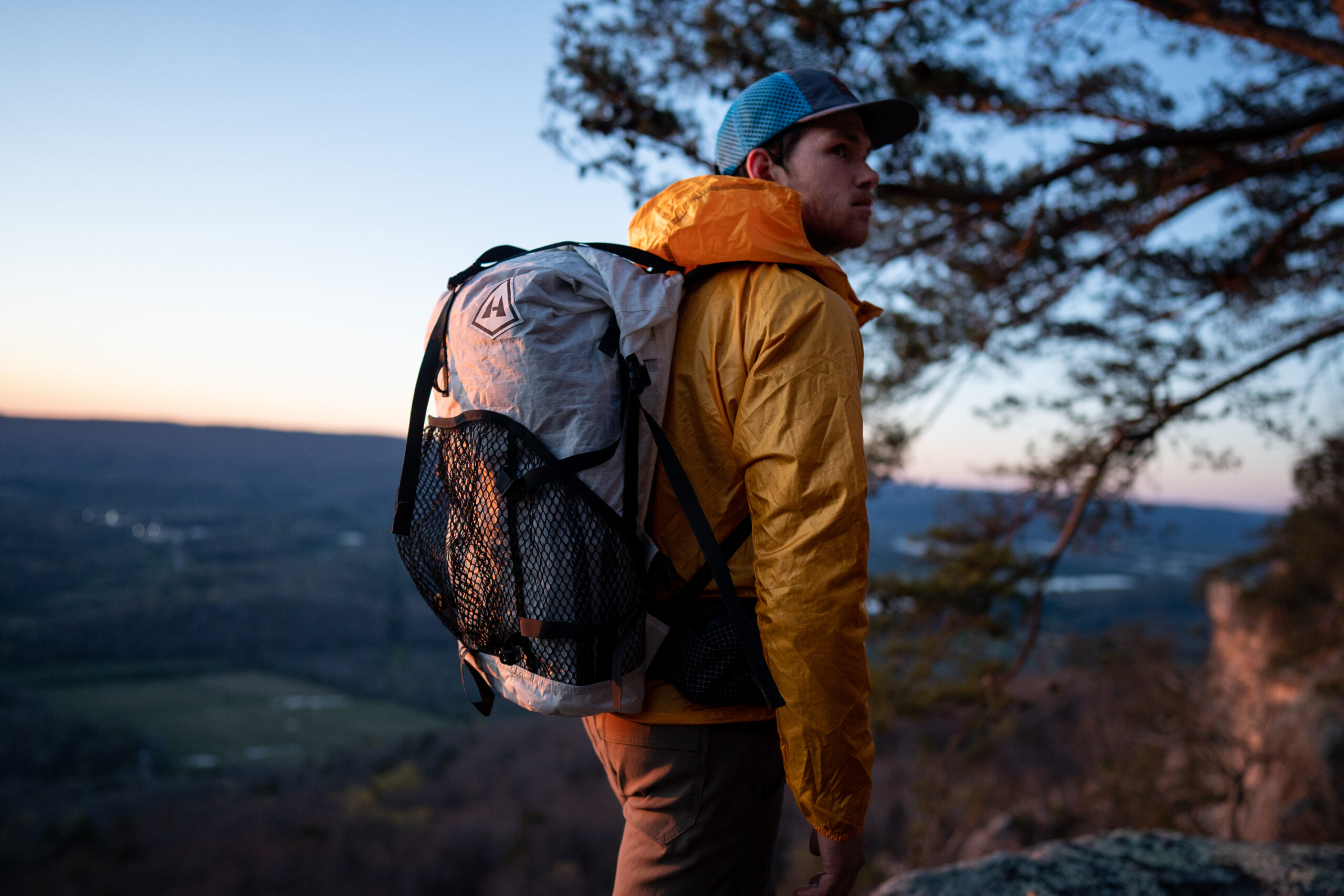
For gear-heavy trips like long approaches, basecamp missions, or extended hunts, a more robust windbreaker is the better choice. Models such as the Outdoor Research Shadow Wind Hoodie or the classic Patagonia Houdini strike a balance between weight, weather protection, and trail-ready features.
These jackets often include multiple pockets, cinch cords, and hoods, and they tend to be cut slightly larger to fit over midlayers. Fabrics are generally more abrasion-resistant to handle pack straps and repeated use. They cost less than alpine shells since they skip high-end stretch fabrics, but the tradeoff is heavier materials and less breathability.

Ultralight Hiking Windbreakers
For fast thru-hikes or ultralight missions where every ounce counts, stripped-down designs rule. Jackets like the Black Diamond Distance Wind Shell
or Enlightened Equipment Copperfield Wind Shirt weigh under 2 ounces yet still offer wind protection in a pinch.
These shells provide the bare minimum: a hood, a simple zipper, and perhaps a single pocket that doubles as a stuff sack. They pack down to nothing and preserve a low base weight, but they sacrifice comfort, features, and long-term durability. Best for those who prioritize speed and efficiency, they are less suited to rough terrain or extended wear.
Layering With Windbreaker Jackets

A windbreaker jacket truly begins to shine when paired with other compatible layers of your kit. While windbreakers work hard as standalone shells in mild temps, in cold, gusty conditions a breathable fleece or synthetic jacket becomes a much more formidable shield with a windbreaker over top, at the cost of barely any weight.
Many windbreaker jackets, particularly in the hiking or mountaineering categories, fit a bit larger to accommodate additional layers underneath, while others have a slim cut that hugs your core and arms more. If you plan on coupling your windbreaker with a few other pieces of insulation, make sure it has the space for the job.
Sleeves that closely hug your arms won’t get in the way or flap around while running or climbing but can quickly become stiff, restricting tubes with too many additional jackets underneath. If you plan on rocking your windbreaker jacket in particularly chilly weather, consider how much room they have underneath for when the mercury plummets.
As is the case with rain jackets, the addition of a light fleece or long-sleeve synthetic shirt underneath will greatly increase the time before your windbreaker wets out in prolonged rain. No windbreaker is fully waterproof, but they can fend off a good deal of moisture if layered correctly. While this combo offers marginal protection, if the heavens really open up and you’re fleeing Thor’s hammer, whip out the hardshell or rain jacket.
Price & Value
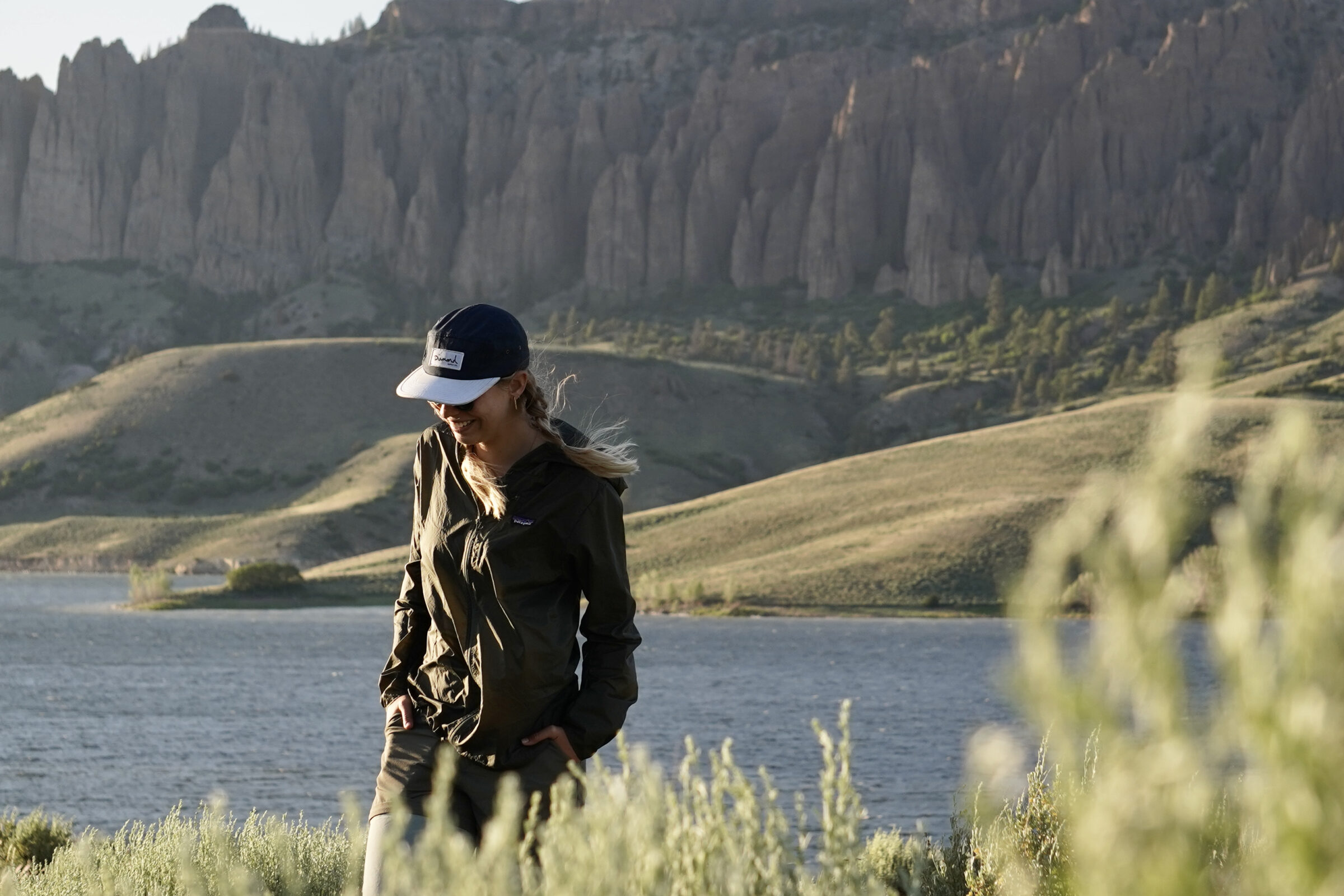
Though windbreaker jackets may seem like glorified trash bags at first glance, we hope this compendium has exposed a bit of the unique value they bring to the table for any adventure you could concoct. From budget picks to technical, specced-out masterpieces, we’ve included a broad range of models for a variety of different uses.
Budget
Solid windbreakers under $100 are available. They won’t usually be as packable, lightweight, or technical as the pricier options on our list, but they’ll get the job done in terms of wind resistance. For instance, the $80 Cotopaxi Teca will serve you well on casual strolls in the woods or breezy days around town, but you’ll probably want to shell out some more cash if truly technical objectives are on the docket. Rab’s Vital Hooded Jacket ($95) is an affordable option that boasts similar performance and protection as some of the top models on this list but isn’t as waterproof or breathable as the top-tier options.
Mid-Tier
Many of our favorite windbreakers fall in this category and range in price from $100 to $150. Our top pick, the Patagonia Houdini ($109) delivers top-notch all-around performance while the Black Diamond Distance Wind Shell ($150) is an ultralight option with incredible wind and water resistance.
Premium
Jackets like the Black Diamond Alpine Start Hoody ($185), Nørrona’s Falketind Aero60 ($199), and Arc’teryx Squamish Hoody ($180) may come with some sticker shock but won’t let you down when reliable, lightweight durability and protection make the difference between successful missions and potential rescues.
Higher-end models weave cutting-edge fabric technology and adventure-specific features into their materials, helping you reduce your pack weight and access more remote areas of the globe. Care for them well, and windbreakers will become some of your favorite companions.
With such negligible weights and inconspicuous packed sizes, there’s no excuse to leave these at home. You’ll forget they’re in your pack but will love them to death when the wind begins to howl.
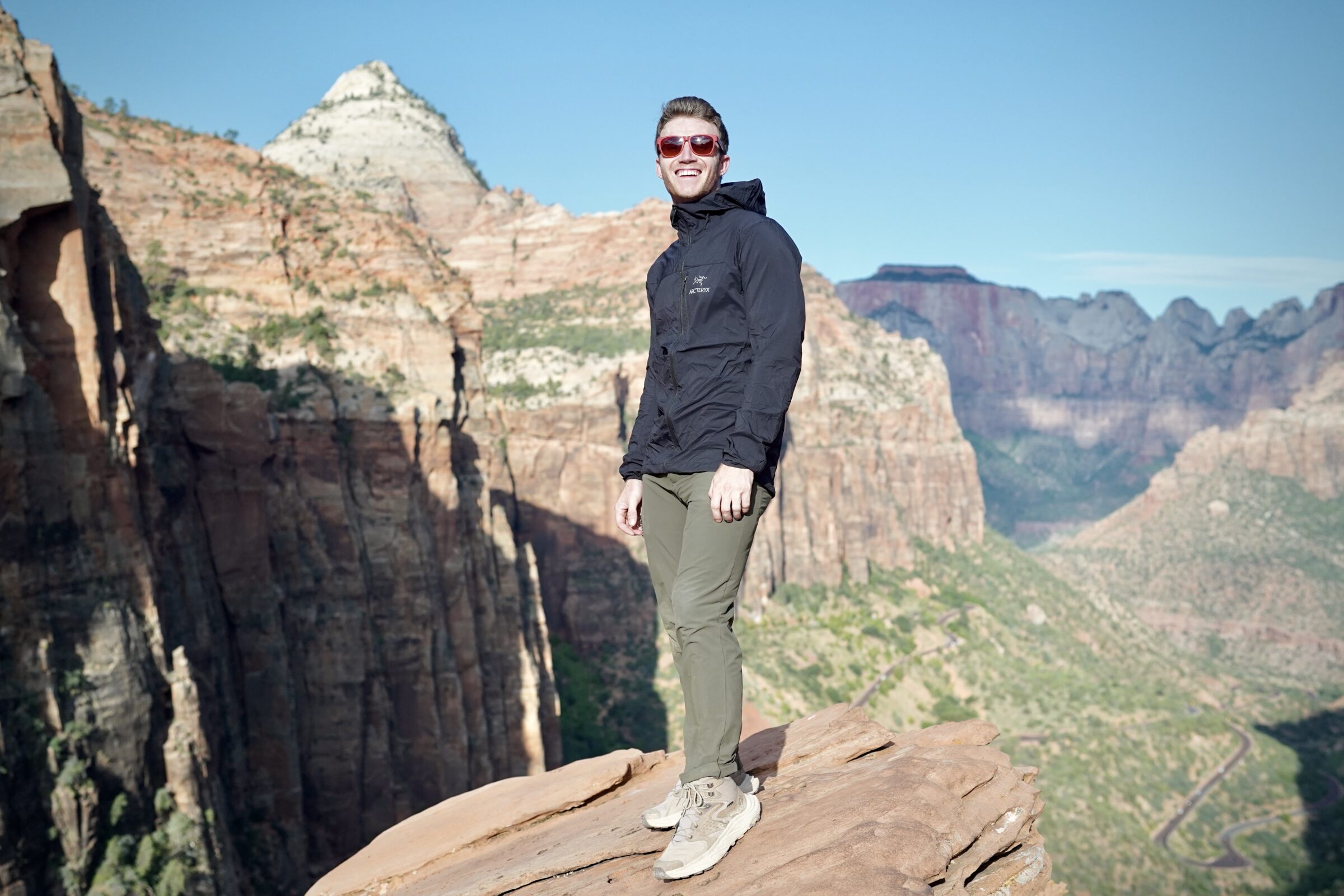
Frequently Asked Questions
The best windbreaker depends on the activity. The Black Diamond’s Alpine Start Hoody excels on demanding alpine expeditions, the Enlightened Equipment Copperfield suits ultralight thru-hikes, and La Sportiva’s Blizzard is built for fast trail races.
For all-around use, the Patagonia Houdiii remains the most versatile choice. It is lightweight, durable, packable, and technical enough to handle almost any adventure.
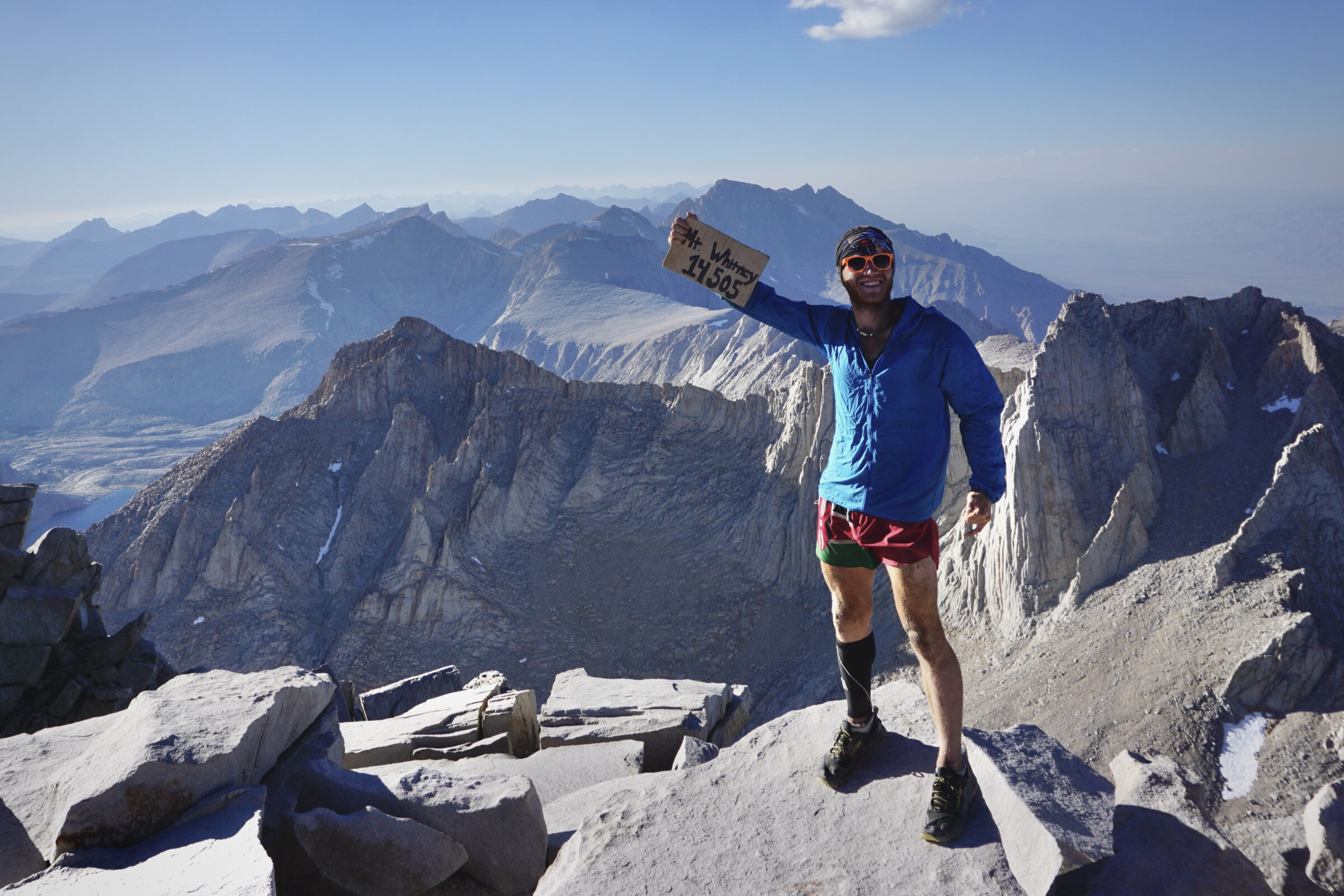
Windbreakers excel in breathability, packability, and mobility, but they cannot match the waterproof protection of rain jackets or hardshells. Each has its role, so the best choice depends on expected conditions and layering needs.
No windbreaker is fully waterproof, but thicker fabrics and DWR coatings can buy you time in a surprise storm. In our testing, wet-out times ranged from 25 seconds to over 20 minutes. Since DWR coatings wear off with use, reapplying a treatment like Nikwax TX.Direct can help restore water resistance. Always carry a rain jacket or hardshell for true protection.
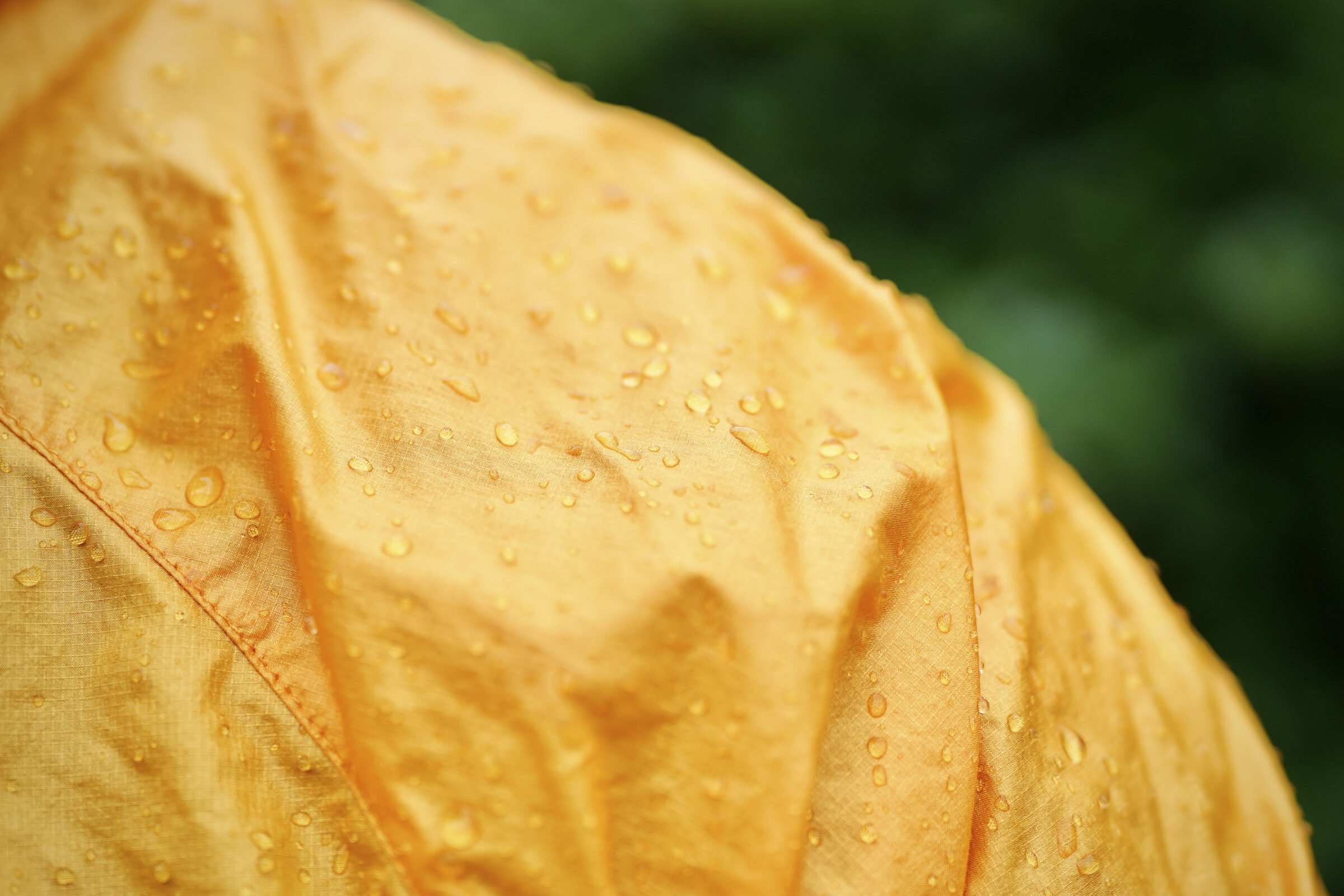
A windbreaker’s weight and packability hinge on its features, fabrics, and breathability. Th eFjallraven High Coast Wind Jacket
comes in at 12.2 ounces with pockets, zippers, and cinches, while the Black Diamond’s Distance Wind Shell trims everything down to just 1.6 ounces.
Overall, windbreakers are the lightest, most packable shells available, offering impressive protection for their size and often making the difference between staying warm in gusts or struggling against the cold.
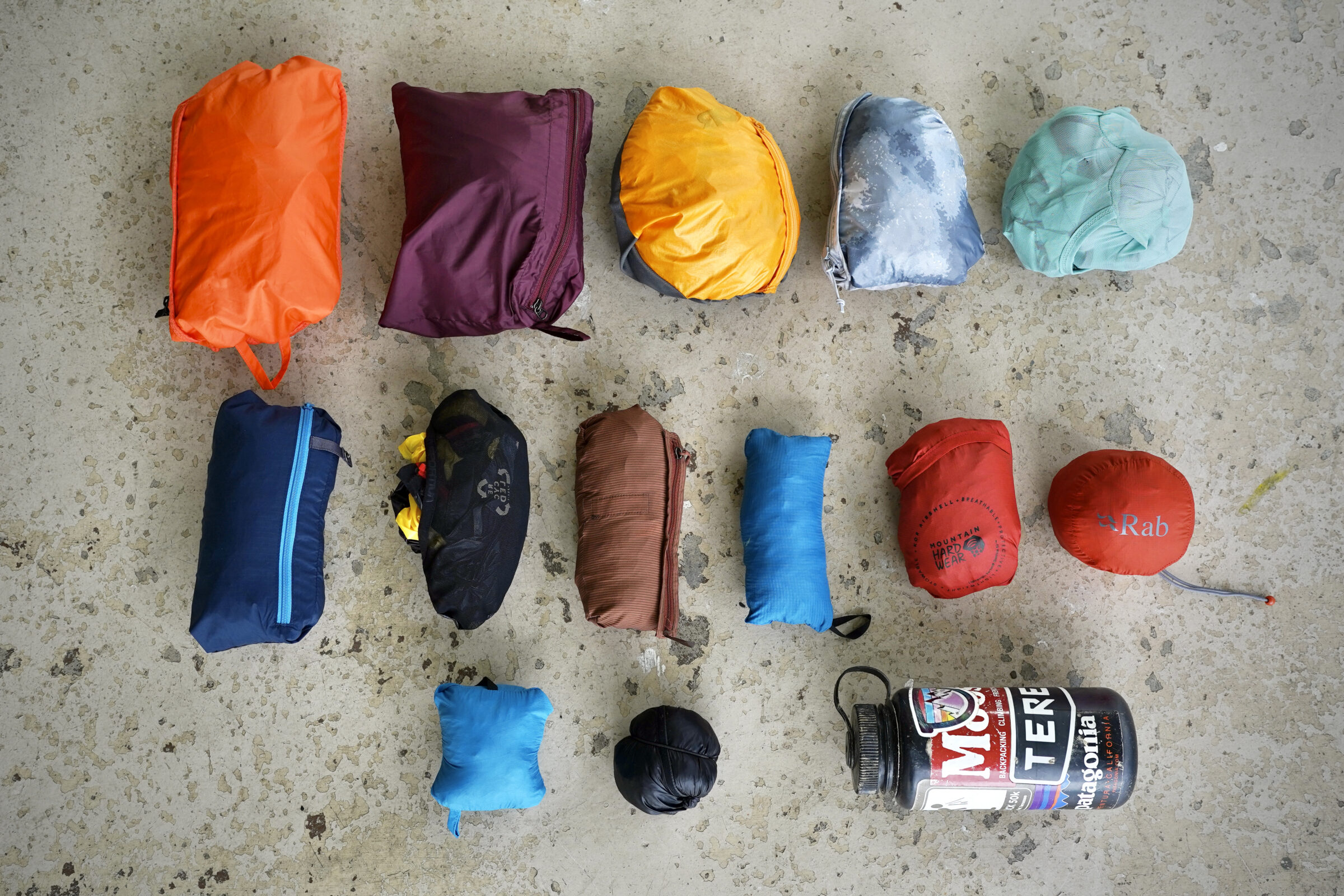

The Best Fleece Jackets of 2025-2026
We tested the best fleece jackets from Patagonia, REI, Black Diamond, Rab, and more to help you find the best option for your needs and budget.

The Best Down Jackets of 2025-2026
We tested the best down jackets from Arc’teryx, Patagonia, Mountain Hardwear, and more to help you find the right jacket for your needs and budget.


